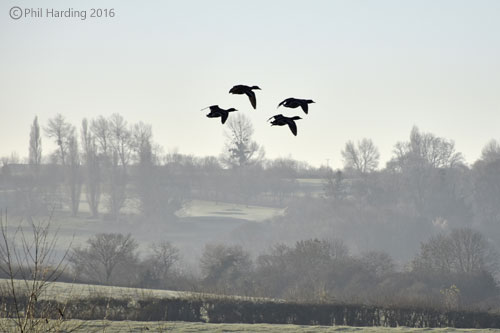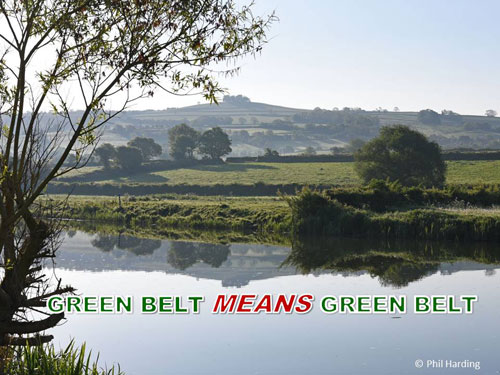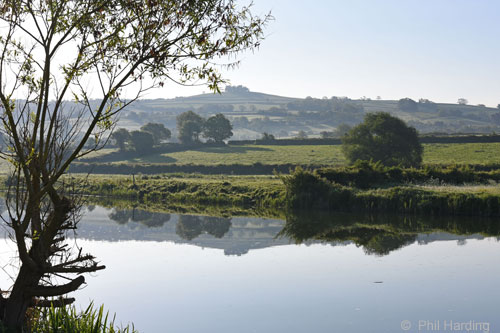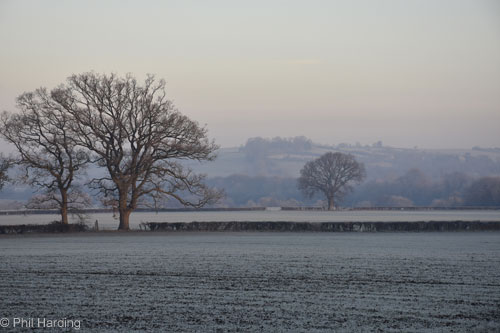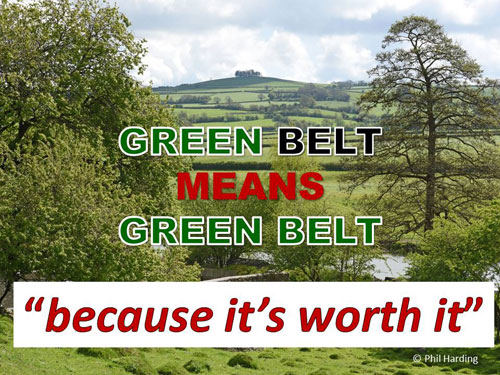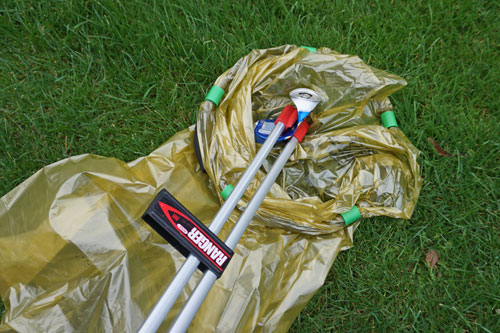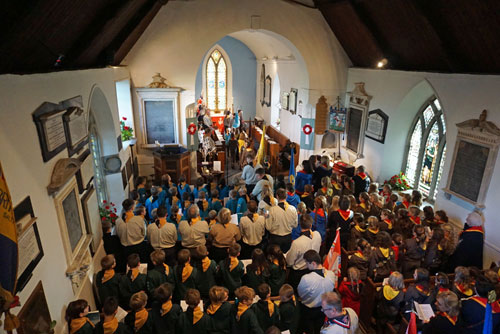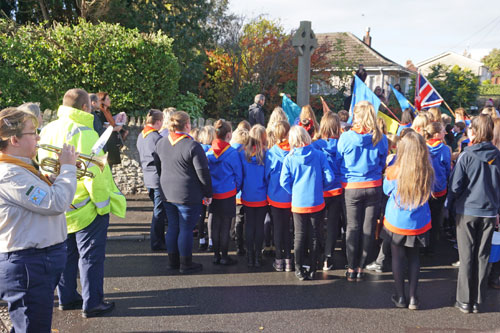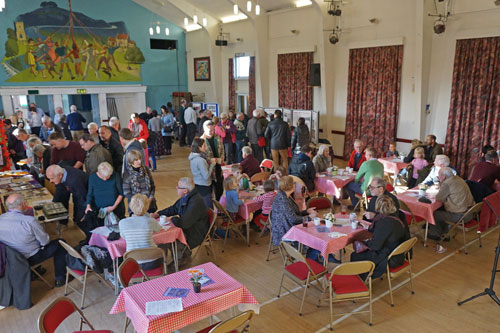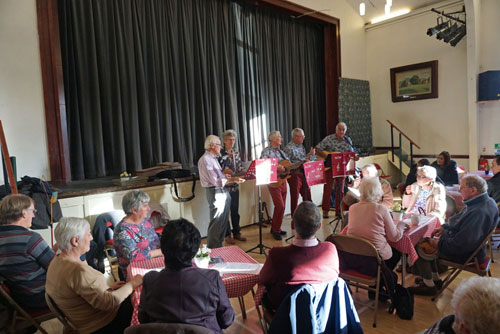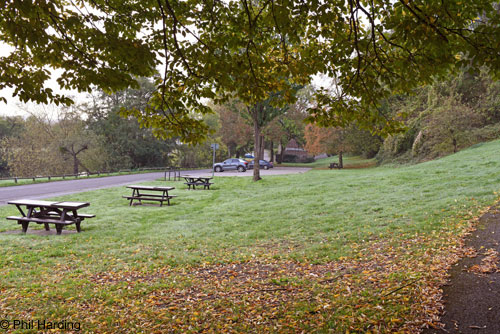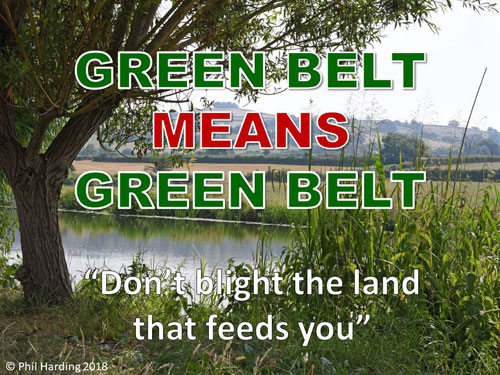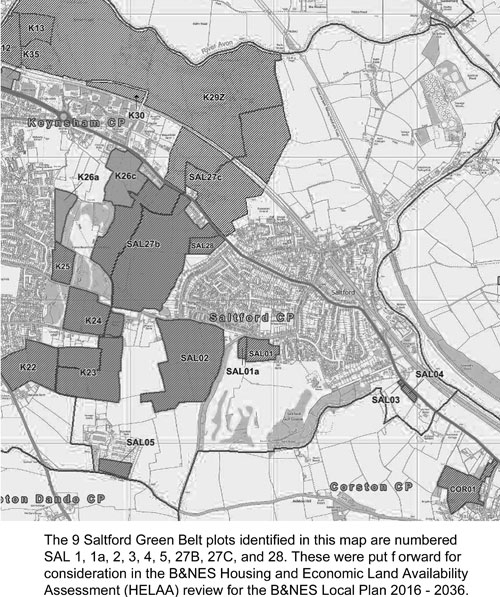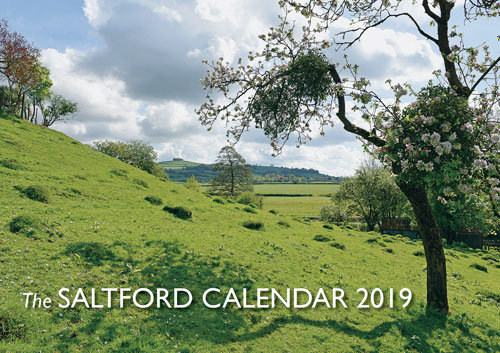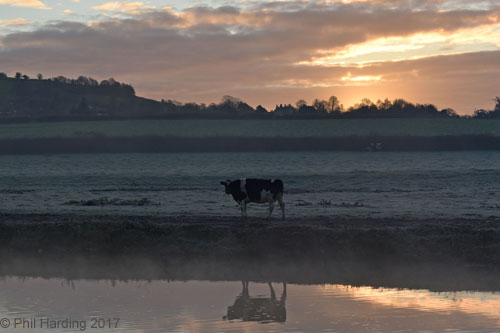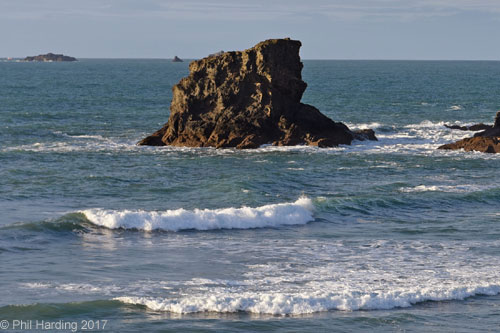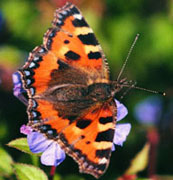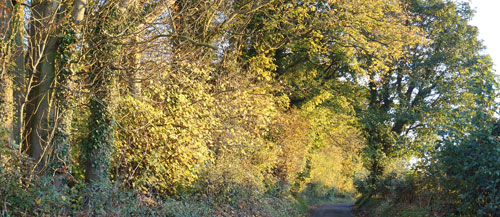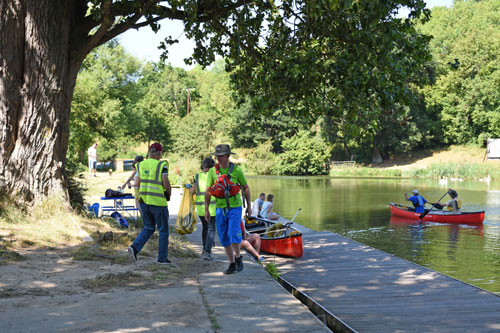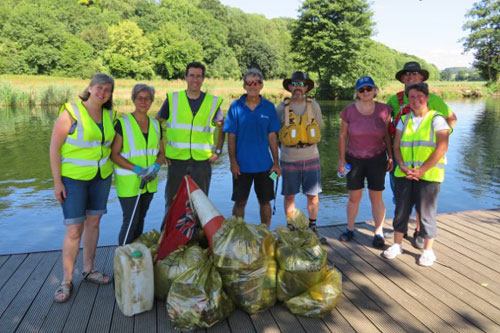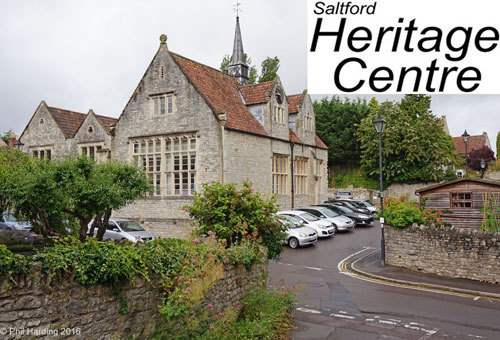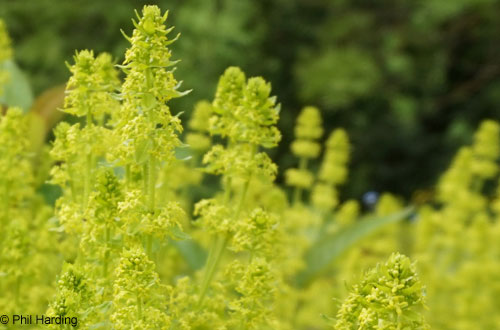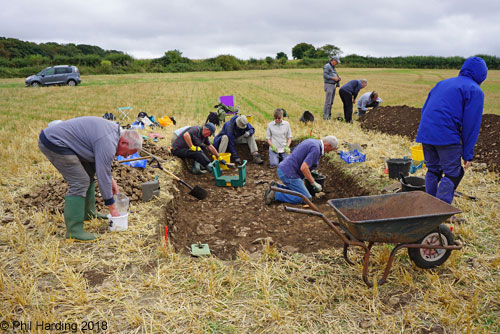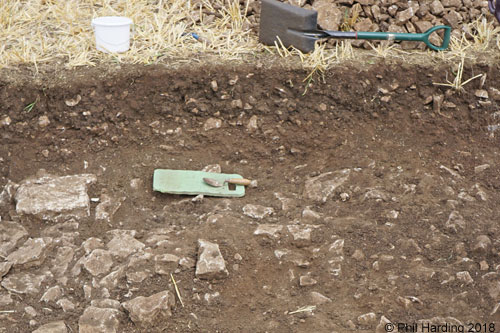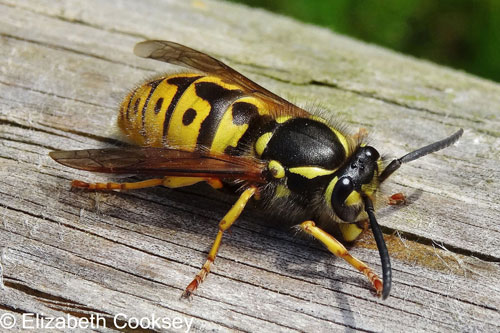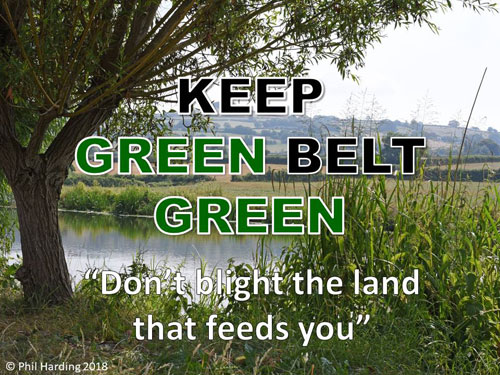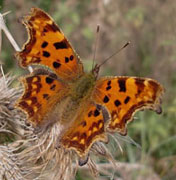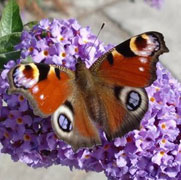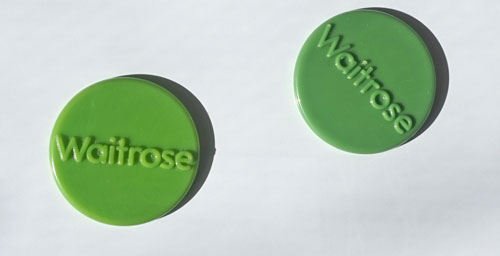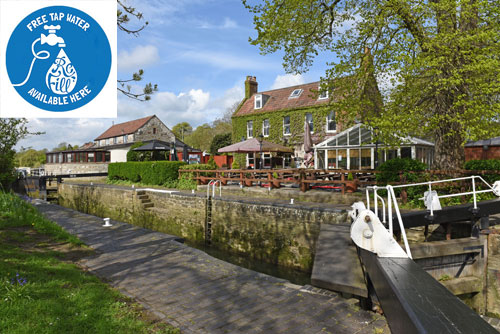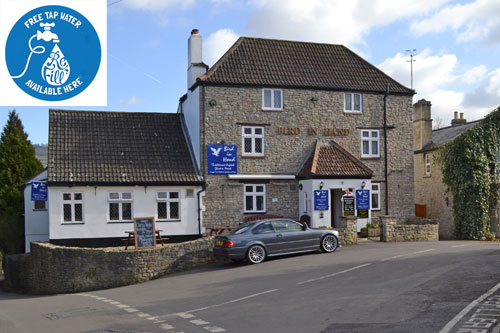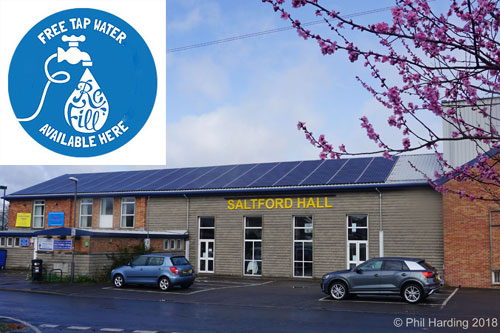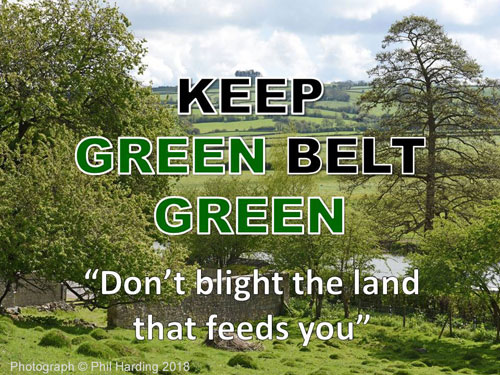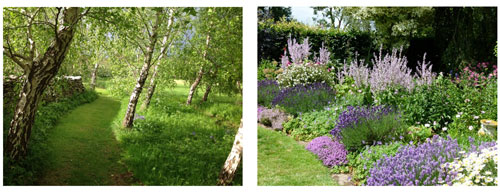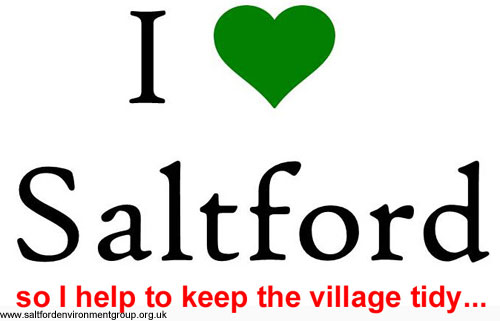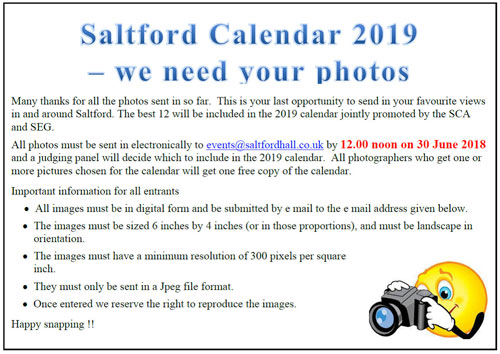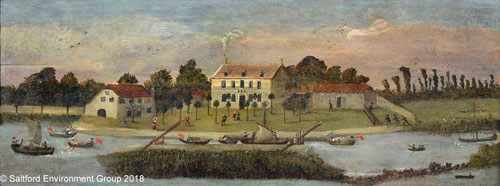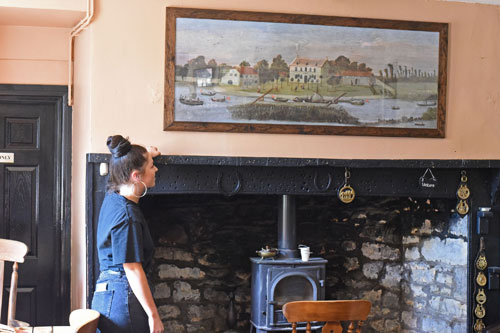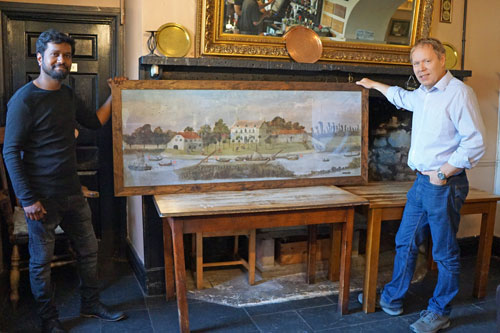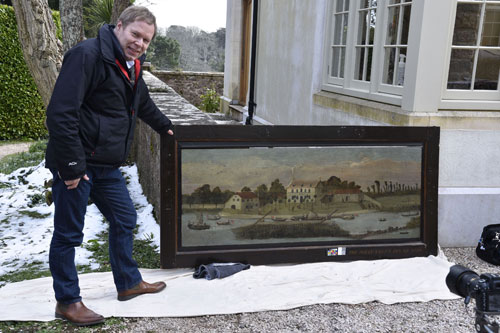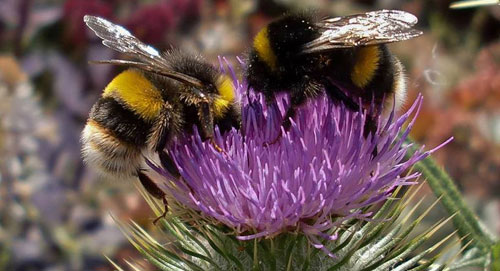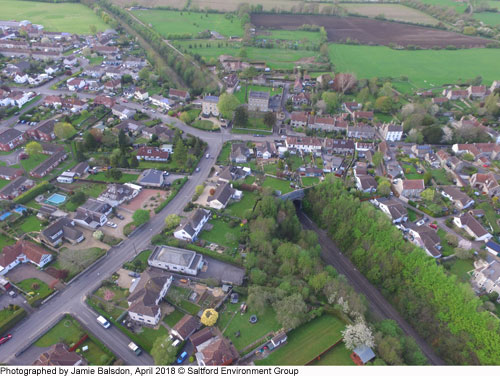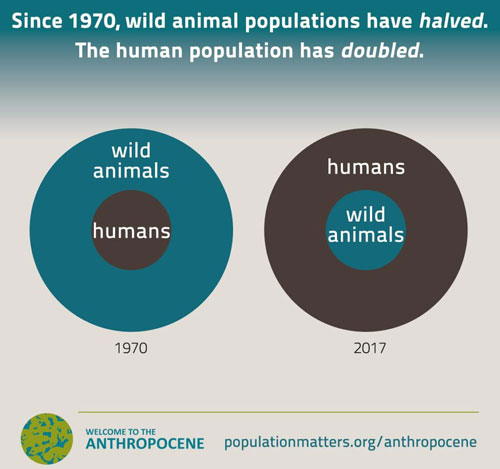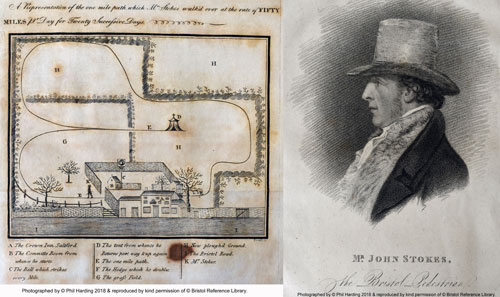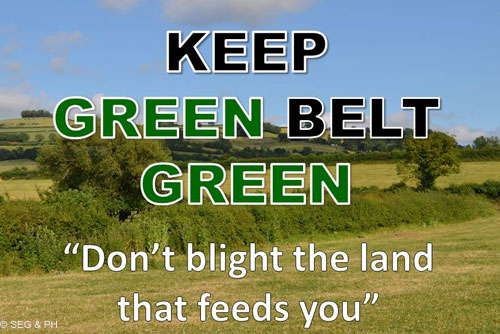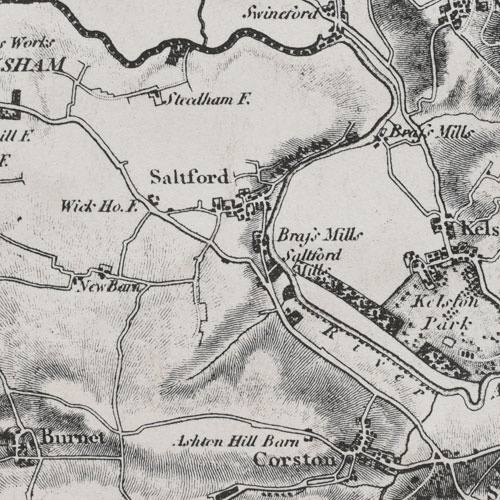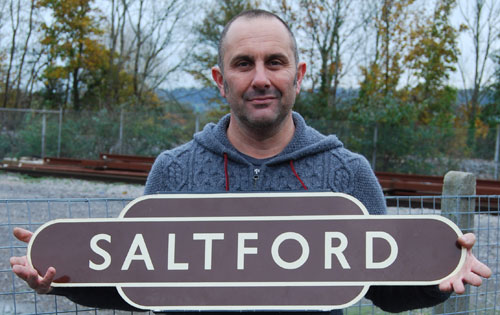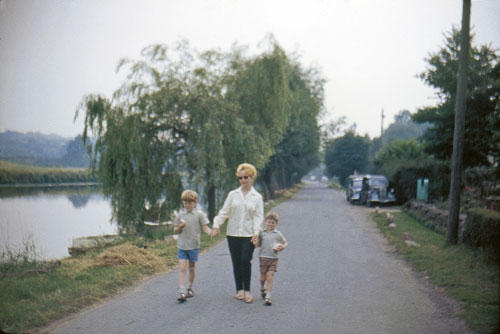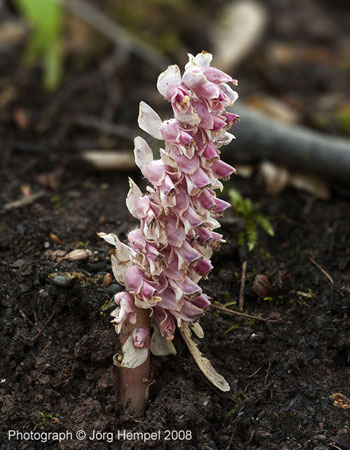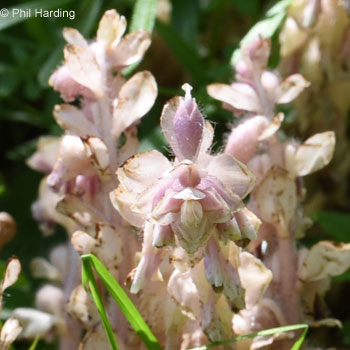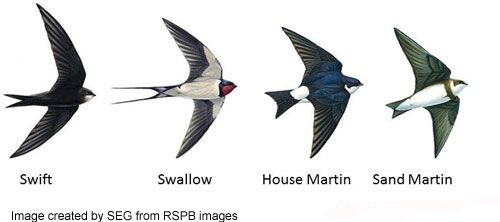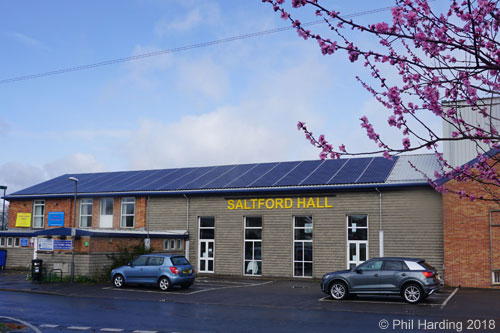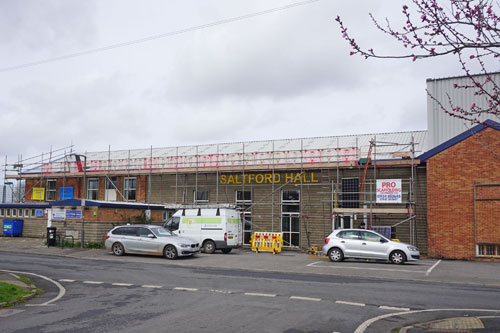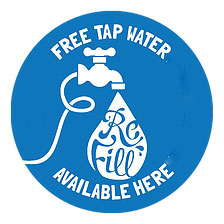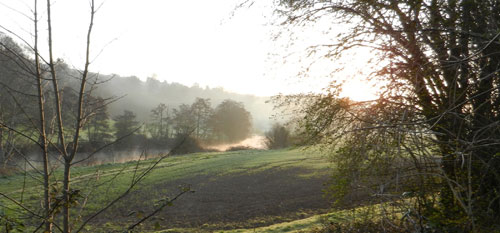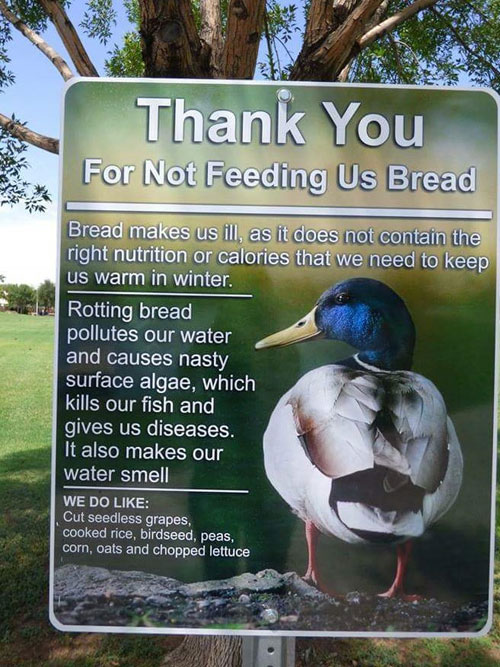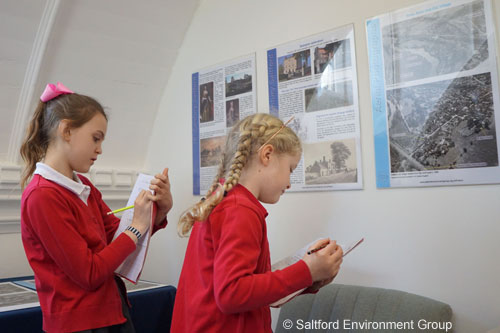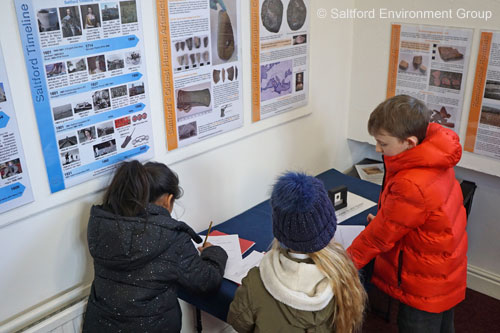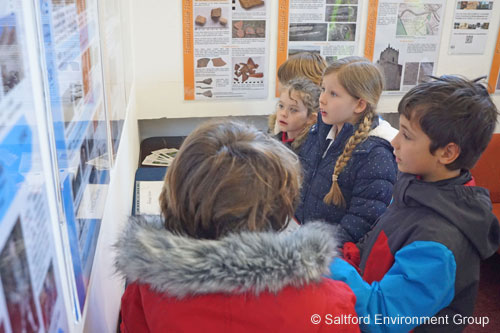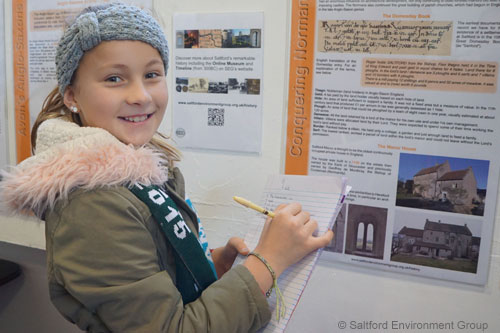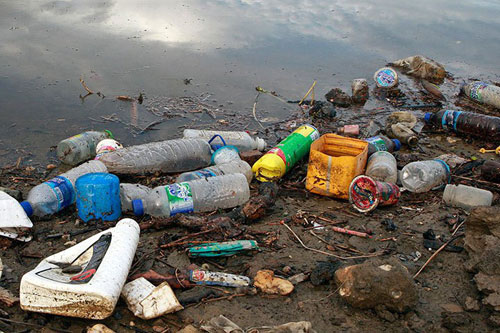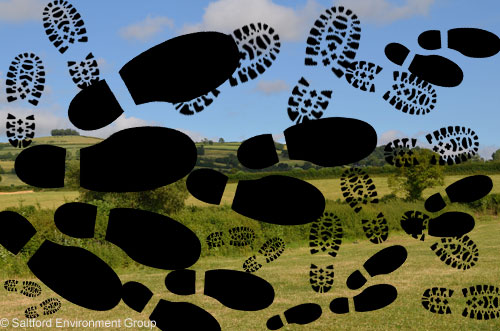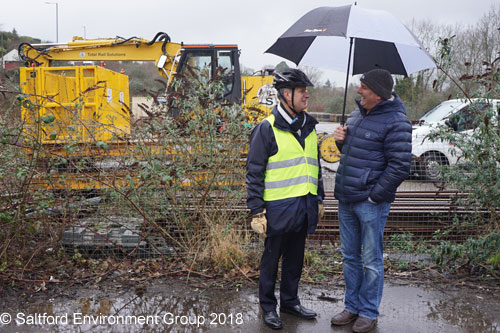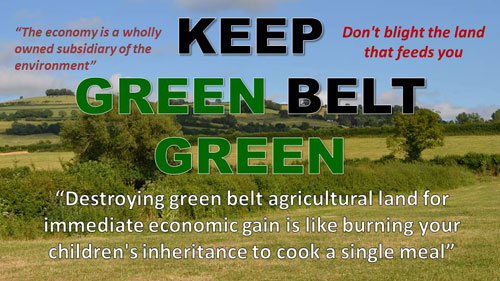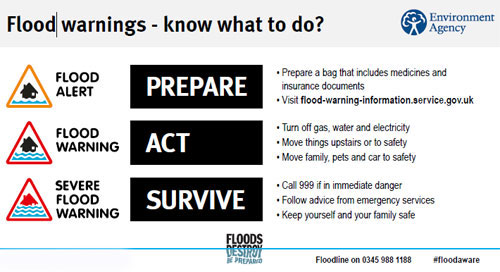|
Saltford Environment Group
|
| Home | About Us | News | Website Contents & Links | Contact |

SEG Home > News List > 2018 News Archive
2018 News ArchiveThe latest stories are on our home page. As this is an archive some older links may no longer connect due to changes in web page URL addresses etc.
An early story in 2018 was news from the Government that planning policy would embrace the principle of 'net environmental gain'. Let's hope this can help us in protecting our Green Belt. Click on each story link or scroll down the page (most recent appears first):-October - December 2018SEG comments on safeguarded Green Belt planning decision (Keynsham East) SEG submits its response to B&NES Local Plan Options Why the Green Belt in B&NES is so important New CPRE report highlights the damage to our soils Good news update on Bristol Airport: 2nd Water bottle filling point Parish Council agrees response to B&NES Local Plan Options Parish Council agrees response to fracking consultation by Government Saltford Wombles: Litter Pick Sunday 25 November Saltford Parish Council seeks progress on station Progress on MetroWest infrastructure Twenty bag hoops gifted to Saltford Wombles in one clean sweep! SEG responds to fracking consultation by Government Saltford shows its respect on Remembrance Day & WWI Armistice Centenary B&NES Local Plan: Options & Transport Studies: winter consultation Local Lib Dems support for Saltford's Green Belt A Saltford Fairtrade Christmas Upcycling Craft Group & Nativity Scene Festival Fairtrade Christmas Extravaganza, Larkall, Bath (2nd Nov) First World War Centenary 11.11.18 - Saltford events Saltford Wombles: Litter Pick Sunday 28th October "Green Belt must be protected" say members at SEG's AGM Saltford Calendar 2019 now available Can we limit global warming to 1.5oC? Upcycling Craft Group, 18th October Tips for reducing plastic microfibres from clothing July - September 2018Butterfly count 2018 results out Saltford Wombles: Litter Pick Sunday 30 September Saltford's Green Belt to be discussed at SEG's October AGM World Textile Day comes to Saltford Hall, 6th Oct New 'Historic Maps of Saltford' display - Saltford Heritage Centre open 16th Sept (2.30 - 4.30pm) Saltford Post Office opening date: 24th September Consulation on B&NES Local Plan options delayed to winter Sustrans to lead Railway Path Habitat Restoration Project Archaeological Dig: Trial trench unearths Roman artefacts Cigarette butts in the environment B&NES Council confirms its opposition to the Government's proposals on fracking SEG objects to premature planning application for another 80 houses between Keynsham and Saltford 1st August is Earth Overshoot Day... Threat from large plastic dinosaurs to Saltford's Green Belt withdrawn CPRE responds to revised national planning policy Government trying to make fracking easier without your consent as Brexit diverts attention The big butterfly count (20 July to 12 August) Water bottle filling point & drinking fountain at Bristol Airport Fines for littering and fly-tipping increase in B&NES Saltford Upcycling Craft Group to make "Ecobricks", July 19th Support Saltford Community Library and Post Office when shopping at Waitrose in July #Refill your water bottle at the Jolly Sailor #Refill your water bottle at the Bird in Hand Saltford gets its first #refill station: Refill your water bottle & avoid plastic waste Saltford Wombles: Summer Update April - June 2018Saltford's Green Belt: B&NES Local Plan & HELAA Update 'Our Power' clean energy scheme launched in B&NES Eastover Farm - Open Garden 1st July in aid of Citizens Advice Saltford Wombles: Litter Pick Sunday 24 June Your photos of Saltford wanted for the 2019 Saltford Calendar 5th June is World Environment Day - celebrate by reducing plastic use Free entry for SEG fundraiser at the Jolly Sailor, 1st June 6pm onwards Image of important early 18th Century River Avon painting returns to Saltford! Saltford School sets the standard for cleaner travel Saltford Wombles : Litter Pick Sunday 20 May Joint Spatial Plan submitted to Secretary of State - papers available to view SEG publishes aerial photographs of Saltford village Biodiversity depletion is why we need to defend the Green Belt The amazing 1,000 mile walk of John Stokes in Saltford, 1815 Changes at Saltford Parish Council's Planning Committee SEG objects to premature planning application for another 200 houses between Keynsham and Saltford Online Map Room with old maps of Saltford Saltford Heritage Centre open 2nd May (8.30pm) Corston History Weekend 21/22 April Festival of Nature: Manor Road Community Woodland Bio Blitz (Sat 28 April) April Wombles litter pick (Sun 22nd) Saltford station campaign signs Railfuture's letter calling for a fund for rail reopenings Wanted! Interesting photos of Saltford WWI Centenary: The Great War Centenary event, Saltford The parasitic Toothwort flowering in Saltford SEG makes the case for 6th purpose of the Green Belt in national planning policy House Martins, Swallows and Swifts over Saltford soon... 2018 Big Garden Birdwatch results: House Sparrow remains top January - March 2018Air quality in Saltford still improving Green & clean energy at Saltford Hall! Refill your water bottle & avoid plastic waste March Wombles litter pick (Sunday 25th) SEG updates bypass policy paper to reflect West of England Joint Transport Study report Annual Saltford Dawn Chorus Walk, 22nd April SEG objects to "Adventure Experience" golf facility etc. on the Green Belt Draft revised National Planning Policy Framework consultation opens The owners of the manor (area of land) of Saltford Saltford Fairtrade Group Coffee Morning, March 2nd Help shape our future - Tell us what you think in 3 minutes Saltford Wombles : Spring Clean & dates for the diary Please don't feed bread to ducks and wild birds 360 local school children visit the Heritage Centre UK's Ecological Footprint in massive overshoot Station Campaign site meeting with B&NES Cabinet Member for Transport Want to get more involved with SEG? Moving away from plastic waste through the circular economy HMG planning policy to embrace principle of 'net environmental gain'? SEG makes its response to emerging local planning policies WWI Centenary: Help with tracing your World War I ancestors Environment Agency flood advice News stories start here (most recent appears first):-October - December 2018Good news to end 2018 as B&NES refuses 200 houses on safeguarded former Green Belt between Keynsham and SaltfordWe are pleased to report that on 28th December B&NES Council refused premature planning application 18/01509/OUT by Mactaggart and Mickel Homes Ltd for 200 houses on safeguarded Green Belt between Keynsham & Saltford. Both SEG and Saltford Parish Council had submitted strong objections to this planning application. The reasons for the refusal given by B&NES Council were:- 1 The application site is safeguarded land and is not allocated for development at the current time. The development of the site has not been proposed for development following a review of the Local Plan. There are no material considerations that would indicate that permission should be granted at this time. The proposed development is therefore contrary to Development Plan polices, including Core Strategy Policies DW1, KE1 and KE3b. The development is also contrary to paragraph 139 of the National Planning Policy Framework which confirms that planning permission for permanent development of safeguarded land should only be granted following a Local Plan Review. 2 The existing road network in the vicinity of the site has insufficient capacity to accommodate the increase in traffic likely to be generated by the proposed development. In future scenarios, there would be significant delays at several locations, and it is likely that queues would block back across adjacent junctions. The proposed development would contribute towards these problems, and no mitigation measures are proposed to help alleviate the predicted delays on the network. The proposed development would result in a severe residual cumulative impact on the road network. The development is therefore considered to be contrary to policy ST7 of the Bath and North East Somerset Placemaking Plan, and contrary to paragraph 109 of the National Planning Policy Framework. 3 The planning application has failed to demonstrate that the required education infrastructure can be delivered in a timely fashion in order to accommodate the children of primary school age generated by the proposed development. There is no school in reasonable distance that has sufficient spare capacity or is able to be expanded in a timely manner to create additional capacity to accommodate the pupil needs arising from the development. The development is therefore contrary to Placemaking Plan policy LCR3A. SEG is aware that the developer may appeal against this planning decision however there is no good reason in planning terms why such an appeal would succeed. December 2018 Government Minister confirms local planning authority should ULTIMATELY decide where houses are builtOn 2nd November 2018 a detailed case was put by the Chair of Saltford Parish Council's Planning Committee (and Chair of SEG) Phil Harding to the Ministry of Housing, Communities and Local Government (MHCLG) via North East Somerset MP Jacob Rees-Mogg concerning the role of developers and the decision making process for where new housing should be located. Jake Berry MP, the Minister for Local Growth at MHCLG made the following statement in his reply of 3rd December 2018 to Jacob Rees-Mogg:- "Allocation of land for development will ultimately be made by the local planning authority, following public consultation on the options available. The technical assessment provides information on the range of sites which are available to meet need, but it is for the local planning authority to determine which of those sites are the most suitable to meet those needs." Thus it can be seen from this response that in the Government's view the ultimate decision on what land should be used for development rests with the local planning authority not with a Planning Inspector examining a draft Local Plan, or a developer seeking to push through a speculative planning application through an appeal. Commenting on the reply on behalf of SEG Phil Harding said: "We welcome this acknowledgement from HM Government that the ultimate allocation of land for development rests with the local planning authority. What we have here is official confirmation that this ultimate role is not for developers making speculative or opportunistic planning applications during the drafting of Local Plans or even a Government Inspector examining a draft Local Plan. Let's hope that this means we get a planning system that is plan led so that housing is built in the right place to meet genuine need and not at the convenience of vested interests." December 2018 SEG comments on safeguarded Green Belt planning decision (Keynsham East)The decision on premature planning application 18/01509/OUT by Mactaggart and Mickel Homes Ltd for 200 houses on safeguarded Green Belt between Keynsham & Saltford has been delayed yet again until 31st December. On 11th December SEG submitted a further objection comment to B&NES referring to SEG's response to the Local Plan Options consultation and proposals affecting Keynsham. Our comments included support for Saltford Parish Council's recommendation and request in its (and SEG's) Local Plan Options consultation response that no further development be permitted at East Keynsham until and not before the effects caused by existing plans for development of the Green Belt in the B&NES Core Strategy have been experienced, assessed and remedied where found to be negative. SEG welcomed the West of England Joint Spatial Plan commitment (in WED 004A) that no housing will be completed at the North Keynsham Strategic Development Location (SDL) ahead of the Avon Mill Lane to A4 link, Keynsham rail station improvements and completion of the Metrobus route from Bristol to Keynsham on the A4 corridor. SEG agreed with Saltford Parish Council's recommendation that after the proposed transport improvements are implemented and are in use, the North Keynsham SDL should be carefully developed using an incremental approach with the two safeguarded East Keynsham sites developed last, if at all, in response to need, not demand, for new housing. That approach can help ensure transport and other infrastructure is coping satisfactorily with new developments added in increments before additional and relatively significant volumes of new houses are built. We have reported in our earlier news coverage on SEG's original planning objection to this planning application. December 2018 SEG submits its response to B&NES Local Plan Options
On 11th December SEG submitted to B&NES Council its response to the B&NES Local Plan Options consultation. We have reported previously concerning the similar response on 4th December from Saltford Parish Council produced jointly with SEG. Key points in SEG's detailed response included the following:-
A website version of SEG's response can be downloaded here: SEG LP Options response (pdf opens in new window). We will keep members updated via this news page of developments in our campaign to protect the Green Belt surrounding Saltford in the context of the draft B&NES Local Plan that is due to be published in 2019. December 2018 Why the Green Belt in B&NES is so important
If you missed the article "Why the Green Belt in B&NES is so important" by our Chairman Phil Harding in the 5th December edition of The Week In or want to read it again, you can read the text of the article here: Green Belt article (pdf opens in new window). As B&NES Council consults on and works up its proposals for the B&NES Local Plan to determine where housing and other infrastructure should be developed for the 2016-2036 period, the Green Belt comes back into the forefront of the debate about where we should build new homes. With the growing pressures on the natural environment and the land that sustains life from the interlinked problems associated with manmade climate change, plastics, poor waste management, consumerism, and unhindered population growth leading to habitat and wildlife species loss, Phil makes the convincing case for why whether we live in villages, towns or cities, we all benefit from the local green open spaces surrounding the area where we live for rest, recreation and the ecological support such land can provide to farmland and thus towards our food security. December 2018 New CPRE report highlights the damage to our soils
The thin layer of soil covering the earth's surface is the difference between survival and extinction for most terrestrial life. We rely for almost all of our food - 95% according to the United Nations' Food and Agriculture Organisation (FAO) - on rainfall falling on a thin layer of soil, often only a few centimetres thick. This living planetary skin is proportionally 10,000 times thinner than our own. But we're taking soils for granted. Our ignorance about soil biology is profound. Soils have been abused and squandered throughout history. In our era (since the last century), the use of agricultural chemistry and the plough have become conventional in farming. This system ignores soil's biological complexity and fails to nurture other important functions. Soils have been regarded as a resource that can last forever. Fortunately, nature is resilient and we can, with care and skill, protect, regenerate and restore soils to health. There is an urgent need to do so. A new report from the Campaign to Protect Rural England explores why soils are so important and sets out the key threats they face. It also tells the inspiring stories of farmers who are employing innovative solutions to bring their soils back to life. Soils support plants that provide food, fibre, fuel and much besides. They retain and release excess water, clean and filter it - removing pollutants and pathogens - to recharge underground stocks. They emit CO2 and absorb it from the atmosphere. The web of organisms in soil are a primary food source for wildlife above. Most fundamentally, soil is the ultimate digestive system, decomposing all that lived and recycling it to enable new life. Soil is both the end and beginning of life. Varied land uses, and especially farming, have shaped the landscape but the underlying soils are fundamental to landscape and the habitats and ecosystems it supports. Healthy soil hosts an incredible diversity of life from tiny, single-celled organisms like bacteria and protozoa to fungi, insects and invertebrates and animals like moles and badgers. Land management that changes the physical and chemical properties of the soil will have an impact on soil biodiversity. In farming the most damaging activities are:
One third of UK soils are thought to be degraded, with 1 million hectares - 36% of all arable land - at risk of erosion. Up to 2.9 million tonnes of topsoil are estimated to be lost to wind and water erosion annually in the UK. The use of undeveloped land for building has more than tripled from 4,500ha a year in the 2000s to 15,800ha (2013-2017). At current rates around 1% of England's farmland is converted to built development each decade. The natural environment acts as a regulator of climate with oceans, forests and soils acting as critical carbon sinks. But land use changes, particularly agriculture, have undermined this over a long period of time. Cultivation of rich organic forest and grassland soils to feed people and livestock continues to cause greenhouse gas (GHG) emissions through various forms of soil degradation. On one estimate, most arable soils have already lost 40-60% of their organic carbon. The report from CPRE can be found on the CPRE website from this link. Information source:
December 2018 Good news update on Bristol Airport: 2nd Water bottle filling point"We use plastic with total abandon without any care or concern about where it's going to go and what it might do" You may wish to know that if you take an empty water bottle through security, following public feedback, there are now two water bottle filling points within the airport. They are:
The information desk can give directions if you forget where they are. December 2018 Parish Council agrees response to B&NES Local Plan Options
Saltford Parish Council agreed its response to the B&NES Local Plan Options consultation at its meeting on Tuesday 4th December. The response, produced jointly with SEG, makes a number of recommendations concerning protecting the Green Belt around both Keynsham and Saltford, raises the question of "net environmental gain", and makes specific recommendations concerning the proposals for relocating Avon Valley Adventure and Wildlife Park eastwards to encroach on Saltford's Green Belt. The SPC's agreed response can be downloaded here: SPC LP Options response (pdf opens in new window). Organisations and members of the public can comment on the Local Plan Options document until 7th January 2019 via the dedicated B&NES Local Plan web page (link). The Keynsham staffed exhibition was held on Thurs 22nd November. B&NES has said it will make hard copies of the document available to be viewed at the following locations during opening hours:- Council Offices:
Work is underway preparing SEG's similar response which will be submitted before Christmas. December 2018 Parish Council agrees response to fracking consultation by GovernmentAt its December meeting held on 4th December Saltford Parish Council (SPC) agreed its response to the Government's consultation on whether applicants in England should be required to conduct pre-application consultation with the local community prior to submitting a planning application for shale gas development (fracking). SPC agreed to submit a similar response to SEG's recent response of 14th November on which we reported last month. Like SEG, SPC agreed with the Housing, Communities and Local Government Select Committee report: "Planning Guidance on Fracking", Paragraph 91, July 2018 that stated "Shale gas development of any type should not be classed as a permitted development. Given the contentious nature of fracking, local communities should be able to have a say on whether this type of development takes place, particularly as concerns about the construction, locations and cumulative impact of drill pads are yet to be assuaged by the Government." Further details concerning the consultation are on the gov.uk website from this link: shale gas consultation. The consultation closes on 7th January 2019. Background information on this controversial topic can be found on our fracking page. December 2018 Saltford Wombles: Litter Pick Sunday 25 NovemberOur last monthly litter pick for this year is on Sunday, 2 - 4 pm. Please note the earlier times owing to shorter days. If you are coming: Please email Jo on saltfordwombles@gmail.com for the meeting points as the focus for our litter picks will vary depending on our numbers. Thank you. If you have litter pickers and gloves please do bring them, but if not we can provide them. We have bags provided by B&NES Council. Also, please let us know whether you have a car you would be happy to use to ferry a group to a start point. As with any Saltford Wombles litter pick, everyone takes part at their own risk and it is essential that children are supervised at all times by a parent/carer. Monthly litter picks will resume on Sunday 27 January 2019. November 2018 Saltford Parish Council seeks progress on stationOn 19th November Saltford Parish Council sent a public letter to a wide range of recipients including B&NES Council Leaders, our MP, First Great Western, Network Rail, West of England Combined Authority (WECA), and the local media expressing its frustration at the lack of information and misinformation from B&NES Council and WECA concerning the future re-opening of Saltford Station. This lack of progress is despite the excellent business case in the 2014 'Saltford Station: Feasibility Study' prepared by CH2MHill. The letter can be downloaded here: SPC station letter 19.11.2018 (pdf, opens in new window). November 2018 B&NES Local Plan Options Consultation (12 Nov - 7 Jan) - possible incursion into Saltford's Green Belt
In the run up to the launch of the B&NES Local Plan Options Consultation we have reported previously about the 9 plots of land on Saltford's Green Belt put forward by developers and landowners for development. The main options document from B&NES does not include any of those plots for housing development but we anticipate that this will be challenged by developers during 2019. The Strategic Development Location (SDL) option proposed at North Keynsham is immediately adjacent to Saltford's Green Belt and in the draft outline map overlaps onto Saltford's Green Belt north of the A4. Whilst accepting that the North Keynsham SDL site boundary has not been set at this stage, SEG would strongly resist such an incursion. It would have negative consequences for both communities whilst breaking the commitment from B&NES Council not to allow development on Saltford's Green Belt. Just as Saltford is a rural village that is set within and surrounded by an open landscape with the Green Belt designation to protect that landscape from unsuitable development, the same can be said for our neighbouring rural town, Keynsham. Whether people live in villages, towns or cities, we all benefit from the local green open spaces surrounding the area where we live for rest, recreation and the ecological support such natural or semi-natural land provides to farmland and thus towards our food security. Our health and well-being really does depend on easy access to green open spaces. SEG is therefore of the opinion that a rural town like Keynsham has good reason to retain its own Green Belt buffer surrounding the town and within its own boundary. Organisations and members of the public can comment on the Local Plan Options document until 7th January 2019 via the dedicated B&NES Local Plan web page (link). The Keynsham staffed exhibition will be held in the Civic Centre Community Space, Temple Street on Thurs 22nd November (3.30pm - 7.30pm). Saltford Parish Council will be discussing and approving its response to the B&NES Local Plan Options consultation at its meeting on 4th December and SEG will be submitting its response during December also. November 2018 Progress on MetroWest infrastructure
The business case for re-opening Saltford station depends on the success of the MetroWest rail project which is planned to bring half-hourly train services criss-crossing the Bristol-Bath sub-region. An essential piece of infrastructure to give capacity for MetroWest has now been put in place. This is the re-instatement of 4 tracks at Filton Bank between Bristol Temple Meads station and Bristol Parkway station (see photograph above). The additional track will allow local commuter trains to run alongside faster inter-city and cross-country services. November 2018 Twenty bag hoops gifted to Saltford Wombles in one clean sweep!
A huge thanks to Nathan Sheppard, of Saltford Building Services saltfordbuildingservices.com, for donating all 20 of the bag hoops we requested on our Amazon wish list! These hoops will be used by the volunteers when out on the regular litter picks around Saltford; it will certainly make the refuse sacks easier to hold and control on windy days! Nathan's support, and recognition, of the role Saltford Wombles play in the local community is much appreciated. November 2018 SEG responds to fracking consultation by GovernmentYou can have a healthy fossil-fuel balance sheet, or a relatively healthy planet... The Ministry of Housing, Communities & Local Government is seeking views on whether applicants in England should be required to conduct pre-application consultation with the local community prior to submitting a planning application for shale gas development (fracking). Representative groups are asked to give a summary of the people and organisations they represent, and where relevant, who else they have consulted in reaching their conclusions when they respond. The consultation, launched on 31 October 2018 and closing on 7 January 2019, seeks views on whether applicants should be required to conduct pre-application consultation with the local community prior to submitting a planning application for shale gas development. It covers the following areas:
Further details are on the gov.uk website from this link: shale gas consultation. SEG made its online response on 14th November. We responded that community pre-application consultation be compulsory prior to applying for planning permission for shale gas development, and gave the following explanation:- For the reasons given below, on democratic and ethical grounds a community should not be expected to host a new fossil fuel based energy production facility like fracking without its democratically elected representatives, the local authority, having the right of veto for such planning applications. It should therefore be for the local authority, not the prospective applicant, to consult the community it represents in any way that it considers appropriate including placing a requirement on any prospective applicants to conduct community pre-application consultations under the supervision and any specific requirements of the local authority. This should enable the local authority to take into account any relevant electoral mandates of its elected members, i.e. manifesto commitments at the most recent local election. We agree with the Housing, Communities and Local Government Select Committee report: "Planning Guidance on Fracking", Paragraph 91, July 2018 that stated "Shale gas development of any type should not be classed as a permitted development. Given the contentious nature of fracking, local communities should be able to have a say on whether this type of development takes place, particularly as concerns about the construction, locations and cumulative impact of drill pads are yet to be assuaged by the Government." Fracking for shale gas does not meet environmental, economic (in net terms) or social objectives when the UK should be actively pursuing clean renewable energy sources and new battery storage technologies to meet its international commitments to reduce the emissions of greenhouse gases and avoid dangerous runaway climate change. The inclusion of shale development or production projects into the Nationally Significant Infrastructure Projects Regime would significantly reduce the value and participation of local views in the decision-making process, a move opposed by a range of organisations, including the Campaign to Protect Rural England, the Local Government Association and, it is reasonable to suggest, an overwhelming majority of informed public opinion.* *Fracking is overwhelmingly unpopular with the British public, with a recent BEIS poll showing support of only 18%: https://assets.publishing.service.gov.uk/
In response to the question "What (if any) shale gas development should be subject to compulsory community pre-application consultation? All shale gas development requiring a planning application/ Where an Environmental Impact Assessment is required/Other criteria or threshold (please specify)" SEG's response was: All shale gas developments should require a planning application AND an Environmental Impact Assessment. BACKGROUND NOTE We reported in July the Government's proposals to streamline the planning process for fracking and reduce the ability of local communities to influence fracking applications. This is by treating non-hydraulic exploratory drilling as 'permitted development' as well as proposals to designate fracking projects as 'Nationally Significant Infrastructure Projects'. We then reported in August that the B&NES Council Cabinet Member for Neighbourhoods and Development, Cllr Bob Goodman, confirmed to SEG in response to our seeking the Council's support for opposition to the Government's proposals that "the Leader of Bath and North East Somerset Council has written to the Secretary of State, Greg Clark to strongly object to the proposals". November 2018 Saltford shows its respect on Remembrance Day & WWI Armistice Centenary
Young people featured in Saltford's marking of Remembrance Day on Sunday 11th November and the centenary of the end of WWI with a large turnout of Scouts and Guides at the morning service at St Mary's followed by a procession and laying of wreaths at Saltford War Memorial. In the afternoon the WWI centenary village event in Saltford Hall included a specially produced Saltford Heritage Centre WWI display, a display from the Parish Council and Bath Record Office on the results of the WWI genealogy research commissioned by SPC for residents, a display from Keynsham and Saltford Local History Society, and a superb display (see bottom picture above) by Saltford School children on their work depicting and describing WWI. A representative from the Avon Branch of the Western Front Association was present to give advice to residents on WWI artefacts etc. that they brought along to the event. About 300 residents attended the afternoon event that was organised by SCA, SEG and the Parish Council. The refreshments, kindly provided by SCA volunteers, included "1918 War Cake" (which proved very popular!). Local band "Then and Now" played and led a sing-a-long of popular and topical songs. Just over £250 in donations for the Royal British Legion was raised. November 2018 B&NES Local Plan: Options & Transport Studies: winter consultationThe consultation on Options and Transport Studies for the draft B&NES Local Plan (2016-2036) is between 12th November and 7th January 2019. During the B&NES Cabinet discussion on 31 October about this consultation, the importance of the Green Belt between Keynsham and Bristol and between Keynsham and Saltford was emphasised by Cabinet members and the Liberal Democrat opposition. The webcast of the Cabinet meeting can be found from this link (item 13 on the agenda). Organisations and members of the public can comment on the Local Plan Options document via the dedicated B&NES Local Plan web page (link). Dates and venues for a number of staffed exhibitions throughout B&NES (all 3.30pm - 7.30pm) are:- Whitchurch (Community Centre, Large Hall) Mon 19th Nov.
B&NES has said it will make hard copies of the document available to be viewed at the following locations during opening hours:- Council Offices:
We will publish further information here on our website when SEG's response has been produced. Background information on the Local Plan and our campaign to protect the Green Belt can be found on our Green Belt page. SEG's members will be aware of our wish to protect the Green Belt surrounding Saltford from development including from developers and land owners that are seeking to include 9 parcels of Saltford's Green Belt in the Local Plan. SEG's Green Belt Campaign is keeping a close watching brief on this issue and we will provide advice to members and residents on how to respond to Local Plan consultations as appropriate. At the Saltford Parish Council meeting on 6th November SPC Councillors unanimously agreed that there should be a close working relationship between SEG and SPC for defending the Green Belt in the B&NES Local Plan. November 2018 (updated 10 & 12 Nov 2018) Local Lib Dems support for Saltford's Green BeltSEG received a letter on 4th November from Duncan Hounsell and Alastair Singleton, the Liberal Democrat spokespersons for the Saltford Ward, expressing the importance of the Green Belt: essential agricultural land, habitats for wild-life, natural carbon capture, recreational activity, a haven of peace and well-being, as well as preserving the essential character of our towns and villages. They made the point that "exceptional circumstances" have to be demonstrated to build on green belt land and that the word exceptional should not be replaced by convenient. They also said that housing needs to be built on brown-field sites first. Housing needs to be built where jobs and facilities exist to minimise the need for travel. If village communities desire small-scale housing development with affordable housing to meet their needs, that is fine. What is unacceptable is imposed large scale development changing the character of our villages. A spokesperson from SEG said:
SEG reminds members and residents of Saltford that it remains politically neutral and works with all political parties in seeking the best for Saltford and the surrounding area. November 2018 A Saltford Fairtrade Christmas
It is always good to get a head start running up to Christmas and it's great to know that there are Fairtrade products to provide the essential ingredients to help you. Look out for the Fairtrade logo on sugar and spice and all things nice for your Christmas cake and Christmas puddings, lovely wrapping paper, Christmas cards and lots of great ideas for presents, oh and also herbs for your sausage rolls. Come along to our colourful Fairtrade Traidcraft stall at the Christmas Fair on 1st December to start your Christmas shopping early. Oxfam shops and supermarkets also stock a good range of Fairtrade products and remember, each time you buy anything that has the Fairtrade logo, you will be supporting the producers and ensuring that they receive a fair price for their produce which will improve their lives and that of their communities. Christmas is about sharing and Fairtrade gives us all that chance. We have one more date for your diary, 8th March, a long way off but worth waiting for. As part of Fairtrade Fortnight we we will be hosting Dr Roy Maconachie, Reader in International Development, Dept of Social and Policy Sciences, University of Bath who will be showing us a film he produced entitled 'Gender and Fairtrade - The Stories of Women Cocoa Farmers in Ghana'. This gives us a powerful insight into these women's lives and issues that are rarely discussed, but have been tackled by belonging to Fairtrade co-operatives. To find out more about our group and ordering from Fairtrade supplier Traidcraft take a look at our Fairtrade page. We look forward to seeing you at the Christmas Market on 1st December and do have a chat with us (a great day out for our community) and also on March 8th. November 2018 Upcycling Craft Group & Nativity Scene FestivalOur Upcycling Craft Group have been invited to create a nativity scene to display at the forthcoming St Mary's 'Nativity Scene Festival'. We plan to use paper and plastic bottles to form our scene. It is a great opportunity to show upcycling skills using simple things that we all have around the house and of course it won't cost the earth. We have all the things needed to make this, so all you need to do is come along, share your ideas and together bring our visions to life and capture the festive season. Everyone is welcome to pop along on November 15th, 7-9pm at Signs of Saltford (workshop). No skills needed to enjoy a free, friendly and creative evening. Tina and Frances are looking forward to meeting you. Do ring Frances on 07789---528834 if you would like to find out more about our group and this particular evening. October 2018 Fairtrade Christmas Extravaganza, Larkall, Bath (2nd Nov)The Fairtrade Way to Get Ahead With Your Christmas Preparations
St Saviour's website is at https://stsaviours.org.uk where directions can be found (at the bottom of the home page). October 2018 First World War Centenary 11.11.18 - Saltford events
Sunday 11 November 2018 will commence with the traditional Remembrance Sunday service starting at St Mary's Church at 10am and finishing at the War Memorial at 11am. In the afternoon there will be a major village event at Saltford Hall organised by Saltford Parish Council, Saltford Environment Group and Saltford Community Association. It will commence at 2pm and run until 5pm and entry will be free. During the afternoon you can see/experience the following:-
Tea and cake including "1918 War Cake" will be provided for this free entry event for Saltford's residents. Donations for the Royal British Legion Poppy Appeal will be accepted. Residents are encouraged to bring along their WWI memorabilia to show to others and ask our WFA expert about them. They will also be able to search and print out recorded evidence of individuals who served or died during WW1. We also encourage residents to come forward with any local pictures they have of around 1918. If you would like to be involved in any way with this event then please email events@saltfordhall.co.uk or ring the SCA Office on 01225 874081. October 2018 Saltford Wombles: Litter Pick Sunday 28th October
Our next monthly litter pick is on Sunday, 2- 4 pm. Please note the earlier times owing to shorter days. If you are coming: Please email Jo on saltfordwombles@gmail.com for the meeting points as the focus for our litter picks will vary depending on our numbers. Thank you. If you have litter pickers and gloves please do bring them, but if not we can provide them. We have bags provided by B&NES Council. Also, please let us know whether you have a car you would be happy to use to ferry a group to a start point. As with any Saltford Wombles litter pick, everyone takes part at their own risk and it is essential that children are supervised at all times by a parent/carer. October 2018 "Green Belt must be protected" say members at SEG's AGM
The main theme for discussion at a packed AGM held on 8th October at the Riverside Inn was the threat to our Green Belt from developers in the forthcoming B&NES Local Plan and the West of England Joint Spatial Plan (JSP). SEG's existing Executive Committee was re-elected un-opposed. Our Chairman Phil Harding in referring to the 2013 Saltford Green Belt Inquiry reminded members that a Green Belt designation is given and thus belongs to a local community to protect its surrounding land and setting. More than anyone else, it is local communities who live with and understand the real value of the "landscape functions" provided by their Green Belt and agricultural land. He said it should be for local people and their local planning authority to determine where new housing should be located - and this is the planning policy set out in the National Planning Policy Framework (NPPF) yet developers constantly challenge the local decision making process. It is the local community like ours that faces the real short, medium and long term disadvantages when developments such as those put forward by developers for the Local Plan and JSP are allowed to proceed. The meeting lasted a full 90 minutes due to the detailed discussion between members and SEG's Executive Committee on how SEG can respond to the challenges posed by developers seeking to build on at least nine parcels of Green Belt land around Saltford and also on Green Belt land East of Keynsham. There was overwhelming support for a new campaign to defend the Green Belt surrounding Saltford.
A larger version of the above map together with a short briefing note on the B&NES Local Plan and West of England Joint Spatial Plan process that was discussed at our 8th October AGM can be downloaded from the link below. Please note that the dates within the note are all subject to change. Green Belt briefing for 08.10.2018 AGM (pdf) If you want to help our Green Belt campaign but were unable to attend the AGM, don't worry. We will be seeking volunteers etc. when we contact members again once SEG's Executive Committee has prioritised the early actions arising from the meeting. UPDATE (28.10.2018): An email describing our early plans and seeking volunteers was sent to all members on 27.10.2018. Information about our new Green Belt Campaign can be found on our Greenbelt page. We will update our website regularly as our plans develop. October 2018 Saltford Calendar 2019 now available
"The Saltford Calendar 2019" featuring some stunning photographs by local photographers is now available to purchase. At just £6 each you can get your calendar(s) from the new Saltford Post Office or the SCA office at Saltford Hall any morning Monday to Friday. Alternatively email events@saltfordhall.co.uk. The production of the annual Saltford Calendar is a joint SCA/SEG initiative. Net proceeds will be split between SCA and SEG to help further their voluntary work supporting our local community. October 2018 Can we limit global warming to 1.5oC?
Limiting global warming to 1.5oC would require rapid, far reaching and unprecedented changes in all aspects of society, the Intergovernmental Panel on Climate Change (IPCC) said in a new assessment report "Global Warming of 1.5oC". With clear benefits to people and natural ecosystems, limiting global warming to 1.5oC compared to 2oC could go hand in hand with ensuring a more sustainable and equitable society, the IPCC said on 8th October. The Special Report on Global Warming of 1.5oC was approved by the IPCC on 6th October in Incheon, Republic of Korea. It will be a key scientific input into the Katowice Climate Change Conference in Poland in December, when governments review the Paris Agreement to tackle climate change. "One of the key messages that comes out very strongly from this report is that we are already seeing the consequences of 1oC of global warming through more extreme weather, rising sea levels and diminishing Arctic sea ice, among other changes," said Panmao Zhai, Co-Chair of IPCC Working Group I. The report highlights a number of climate change impacts that could be avoided by limiting global warming to 1.5oC compared to 2oC, or more. For instance, by 2100, global sea level rise would be 10 cm lower with global warming of 1.5oC compared with 2oC. The likelihood of an Arctic Ocean free of sea ice in summer would be once per century with global warming of 1.5oC, compared with at least once per decade with 2oC. Coral reefs would decline by 70-90 percent with global warming of 1.5oC, whereas virtually all (> 99 percent) would be lost with 2oC. "Every extra bit of warming matters, especially since warming of 1.5oC or higher increases the risk associated with long-lasting or irreversible changes, such as the loss of some ecosystems," said Hans-Otto Pörtner, Co-Chair of IPCC Working Group II. "The good news is that some of the kinds of actions that would be needed to limit global warming to 1.5oC are already underway around the world, but they would need to accelerate," said Valerie Masson-Delmotte, Co-Chair of Working Group I. The report finds that limiting global warming to 1.5oC would require "rapid and far-reaching" transitions in land, energy, industry, buildings, transport, and cities. Global net human-caused emissions of carbon dioxide (CO2) would need to fall by about 45 percent from 2010 levels by 2030, reaching 'net zero' around 2050. This means that any remaining emissions would need to be balanced by removing CO2 from the air. "Limiting warming to 1.5oC is possible within the laws of chemistry and physics but doing so would require unprecedented changes," said Jim Skea, Co-Chair of IPCC Working Group III. Allowing the global temperature to temporarily exceed or 'overshoot' 1.5oC would mean a greater reliance on techniques that remove CO2 from the air to return global temperature to below 1.5oC by 2100. The effectiveness of such techniques are unproven at large scale and some may carry significant risks for sustainable development, the report notes. Further information can be found on the IPCC website: www.ipcc.ch. October 2018 Upcycling Craft Group, 18th OctoberHave you wondered how we all seem to accrue an odd selection of redundant keys and what to do with them? What about creating your own bespoke jewellery with the Saltford Upcycling Craft Group? We have all the items needed to make and finish your own jewellery (including keys). Do bring along any old nail varnish, beads, broken jewellery to repurpose in fact anything you can think of to decorate the keys (plus any 'accumulated' keys!); we all share. Everyone is welcome to join us for a fun, relaxed evening, no experience needed, we all learn together. No need to book, just come along from 7-9pm on October 18th, at Signs of Saltford, 559 Bath Road. Tina and Frances are looking forward to seeing you. October 2018 Tips for reducing plastic microfibres from clothing
A microfibre is a plastic-based thread that is thinner than a human hair. Many clothing products shed microfibres during their lifetime. For example, they wash out of our synthetic clothes. Most of these tiny fibres derive from polyester. It is light, warm and has quick-drying properties thus making it perfect for clothing. Other common microfibres include nylon and acrylic. They're in our carpets, curtains and other household textiles, as well as our clothes. Microplastic pollution is cropping up all over the world including in extremities like the Arctic and Antarctic. Huge volumes of these microfibres from synthetic fabrics are getting into aquatic animals from our washing machines via waste water treatment works. This is alarming as these tiny plastic-based microfibres have the potential to poison the food chain. Here are 8 tips from Friends of the Earth (friendsoftheearth.uk) on how you can reduce the release of plastic microfibres from your clothing:- 1. Wash at low temperatures A lower-temperature wash is less aggressive and therefore less likely to shake out plastic fibres. 2. Put your washing in a special bag Use a Guppy Bag (a mesh type laundry bag) or Cora Ball (a microfibre catching laundry ball) in your washing machine. They may help to reduce or catch the microfibres that shed from your clothes during washing. 3. Fill the washing machine A full washing machine reduces friction between items - in other words, they don't rub against each other as much. 4. Reduce spin speeds Faster spins dry clothes quicker but they also shake them up more, risking more plastics shedding. 5. Air dry rather than tumble dry Tumble drying is more aggressive than air drying - and could cause your clothes to shed more plastic. And don't leave the fluff from your tumble dryer outside for birds to use as nesting material as that is another way for plastic microfibres to get into the natural environment! 6. Use a front-loading washing machine Tests show that top-loading washing machines probably release more plastic fibres. 7. Buy fewer fleeces Polyester fleece could well be one of the biggest emitters of microfibres. Consider buying a woollen fleece instead. 8. Keep your clothes for longer Your clothes are likely to shed more plastic in the first few washes - so frequently changing your wardrobe will probably increase the amount of plastic you're sending into the environment. Buy higher quality clothes that last. October 2018 July - September 2018Butterfly count 2018 results out
The results for the big butterfly count for 2018 (20 July to 12 August) have been published. Given the long, hot sunny spell leading up to big butterfly count 2018, conditions that are ideal for butterflies, the organisers (Butterfly Conservation) expected record-breaking numbers of sightings, alongside the high levels of participation, over 100,000. Almost 1 million of the 19 target species (17 butterflies and two day-flying moths) were recorded during the official big butterfly count period. Despite those impressive numbers, participants generally did not experience a butterfly bonanza. On average, just over 11 individuals of the target species were seen per 15-minute count, only slightly higher than the 2017 average (11.2 in 2018 compared with 10.9 in 2017), which was the lowest since big butterfly count began in 2010. It was a good year for white butterflies; the total abundance of Small White, Large White and Green-veined White made up 55% of all the target species counted in the 2018 event. However the Small Tortoiseshell (see image above), which has lost three-quarters of its UK population since the 1970s, suffered its worst big butterfly count on record, worse even than in the wash-out summer of 2012. Small Tortoiseshell numbers were down by a third compared to the same period in 2017 across the UK as a whole. The causes of the ongoing long-term decline of this beautiful butterfly remain unclear. The disappointing number of individuals seen by participants is probably not a fair reflection on the population levels of the UK's common butterflies and moths during the summer. The warm weather from April onwards led to many species starting their flight periods early in 2018 and, as a result, some of the abundant single-brooded species such as Meadow Brown, Ringlet, Six-spot Burnet and Marbled White were already past their peak in numbers by the time big butterfly count 2018 started. In England the top 10 most abundant species were:- 1. Small White More information on the results can be found from this link (the source of this news item): https://www.bigbutterflycount.org/2018mainresults. We have links to Butterfly Conservation's images and information on each of the 24 species observed in recent years in Saltford on our wildlife page. September 2018 Saltford Wombles: Litter Pick Sunday 30 September
Our next monthly litter pick is on Sunday 30 September, 2 - 4 pm. Please note the earlier times owing to shorter days. The meeting point will be The Little Coffee Shop as the focus for our litter pick will be A4 and the Longwood Lane Woods. If you have litter pickers and gloves please do bring them, but if not we can provide them. We have bags provided by B&NES Council. If you are coming: please email saltfordwombles@gmail.com to give us an idea of numbers. Thank you. Also, please let us know whether you have a car you would be happy to use to ferry a group to a start point. As with any Saltford Wombles litter pick, everyone takes part at their own risk and it is essential that children are supervised at all times by a parent/carer. September 2018 Saltford's Green Belt to be discussed at SEG's October AGM
The map above shows all Saltford Housing and Economic Land Availability Assessment (HELAA) sites that are being considered/assessed in order to inform preparation of the B&NES Local Plan. Those 9 site are all on Saltford's Green Belt and were submitted to B&NES by developers/land owners following a call for sites in early 2017. SEG members will shortly be receiving an invitation to our AGM on 8th October where we will discuss and engage with members on how together we can help the village protect its Green Belt in 2019, a crucial year for our village as the West of England Joint Spatial Plan and B&NES Local Plan reach important stages towards their completion and adoption. We know that protection of the Green Belt matters to our members so look out for the invitation email that will be arriving soon. If you want to keep the Green Belt green we hope you will be able to attend. BACKGROUND
SEG takes the sustainable development view that there are no genuine 'exceptional circumstances' that could support a case for building on Saltford's Green Belt when taking account of ecological, environmental, transport, economic, social and employment factors. It is our strong wish that sites in Saltford's Green Belt are not identified for potential development in the draft Local Plan. September 2018 World Textile Day comes to Saltford Hall, 6th OctBringing fair trade to a fair trade village On 6th October, 10 am - 4.30 pm, there will be FREE admission at Saltford Hall in Wedmore Road to an exhibition of woven, printed and embroidered textiles from makers, workshops and villages around the world. More information can be found from this link worldtextileday.co.uk/venues/west-of-england. September 2018 Autumn Season: Wombles update
Thank you to everyone for keeping the village so tidy across the summer and especially to those who joined in with Canoe Avon at the annual River Clean. On a sunny late July afternoon 11 volunteers from Wombles and Canoe Avon met up, the canoeists tackling the river whilst we Wombles covered the river banks. In 2 hours, we collected 13 bags of litter (some are pictured below) and some very unusual pieces of rubbish including a traffic cone, a flag, a bike wheel, a large, empty herbicide plastic container and a washing up bowl.
Monthly Litter pick dates These will be on the last Sunday of each month from 2-4 pm. Please note the change in time to account for shorter days. Meeting places will vary depending on the hot spot area - details will be emailed to those on the Wombles mailing list and posted on this website beforehand. Dates are: Sunday 30 Sept Sunday 28 Oct Sunday 25 Nov No monthly pick in December If you are coming please email saltfordwombles@gmail.com to give us an idea of numbers. As with any Saltford Wombles litter pick, everyone takes part at their own risk and it is essential that children are supervised at all times by a parent/guardian. September 2018 New 'Historic Maps of Saltford' display - Saltford Heritage Centre open 16th Sept (2.30 - 4.30pm)
Saltford Heritage Centre will next be open to the public from 2.30pm to 4.30pm on the afternoon of Sunday 16th September as part of the B&NES Heritage Days initiative (6-16 Sept). Saltford Brassmill will also be open that day (10am - 4pm) so why not make it your local heritage day and visit both venues? New! Historic Maps of Saltford In addition to our displays describing Saltford's fascinating past and examples of local artefacts on show will be our new display of Historic Maps of Saltford from 1742 including the first OS map showing Saltford (1817) and the 1837 Tithe Map showing the original field names. We shall also have an internet linked display screen so that we can show visitors how to access our comprehensive online material. Admission free. You can find out more about the Heritage Centre here: Saltford Heritage Centre. September 2018 Saltford Post Office opening date: 24th SeptemberWe have seen confirmation from the Post Office that Saltford Post Office will be re-opening on Monday 24th September at Saltford Library, 478a Bath Road, Saltford BS31 3DJ. Congratulations to all concerned at Saltford Community Association for their dedication and hard work in rescuing this important community facility. August 2018 Consulation on B&NES Local Plan options delayed to winterWe gave an update in June on the forthcoming B&NES Local Plan that could have a significant impact on Saltford's Green Belt as 9 sites have been put forward by developers/landowners in response to the HELAA (Housing and Economic Land Availability Assessment) call for sites. It does not follow that B&NES Council will accept all, some or any of those as suitable sites for development, but it has to assess them. That assessment is to satisfy the HMG Inspector that the process has considered all "reasonable alternatives". The Chair and Vice Chair of Saltford's Parish Council Planning Committee have been in discussions with planning policy staff at B&NES during August. SEG members will be aware that the Parish Council shares SEG's policy to protect from development the Green Belt surrounding Saltford. There is some slippage on timing for the Joint Spatial Plan (JSP) consultation and B&NES Local Plan options consultation. These will now coincide during November/December and not September (for Local Plan options) as previously predicted. As we reported in June, the B&NES website, Housing Land Supply page, lists and maps 9 sites on Saltford's Green Belt that have been submitted by developers/land owners. Saltford Parish Council (SPC) has made its case to B&NES regarding those 9 sites and the planning policy and related reasons why those sites are not suitable for development. We have more background information on this topic on our Green Belt page. August 2018 Sustrans to lead Railway Path Habitat Restoration Project
We are pleased to report that Sustrans (link), as part of its Greenways initiative, is now leading on maintaining the previously opened area of our Railway Path Habitat Restoration Project, and, if person-power allows, perhaps even expanding it. On Saturday 15 September from 10.30am - 12.30pm Sustrans will be holding a working party session on the SEG 'habitat bank'. This session will focus on removing brambles etc. by the roots, which have started to reinvade the opened area. If you would like to participate please bring a full-size garden fork or spade if you have them. Wear stout shoes, gardening glove are advised. Other activities will include removing regrowth shoots from woody stumps - so if you wish to help with that aspect please being secateurs. And do bring your own refreshments. If you wish to participate there is no need to register, just turn up on the day. Andy Richman is co-ordinating this project for Sustrans. If you wish to volunteer with Sustrans visit: www.sustrans.org.uk/volunteer-sustrans. August 2018 Archaeological Dig: Trial trench unearths Roman artefacts
SEG and BACAS (Bath and Counties Archaeological Society) have jointly completed a trial excavation at a site on the south side of Saltford where geophysical surveys had indicated the possible presence of a Roman building. Originally planned for October, the dig had to be brought forward to August and scaled back because access to the field was required earlier than anticipated in order to prepare the field for sowing the next crop. The change in the farmer's schedule was due to the summer heatwave. A limited dig involving the excavation of one trial trench was carried out over 3 days from 13-15 August. This was undertaken by a small team of volunteers.
The trial trench measured approximately 3 metres wide by 4 metres long. An uneven limestone floor was discovered below the top soil with a thin layer of soil between the limestone floor and the bedrock beneath, the bedrock being less than 1 metre below the surface. Immediately above and within the limestone floor top surface the following was found: two small bronze Roman coins, numerous pottery sherds dating mainly from the Roman period, hobnails and roofing nails and a variety of bones mostly from cattle and sheep, some of which had clearly been butchered (clean cut). A third Roman coin was later found in the spoil heap. Those items and previous finds suggest that the site may have been used for various purposes including farming, livestock holding and/or meat processing, and possible light industry supporting agricultural and other activities. It is also possible that the site's use changed several times during the Roman occupation and that another area of this very large site was used as a dwelling. It will take some time for the findings from the trench to be interpreted by the archaeological experts at BACAS and for the artefacts found to be identified and dated. We will announce and publish a copy of the BACAS report on our Online Museum when it is available. SEG is very grateful to the team from BACAS and local volunteers for taking part in this trial dig which had to be organised hurriedly before we lost the August time window. August 2018 The real value of wasps
Whilst many find wasps annoying and associate them mainly with the risk of being stung, it is important to regard them not simply as pests that can sting, but as an important part of our ecosystem (the community of animals and plants) and thus our economy. Wasps as a group help protect farm crops by predating insects and, like bees, they are important pollinators. Wasps also play a valuable clean-up role by scavenging vast amounts of waste organic material as they gather protein to feed to their larvae. It is not clear whether, if all wasps were eliminated, that other parts of the ecosystem would expand to take over their roles. The well-established fact that pollinators, as a group, are under severe decline in England suggests a high risk that if the wasps disappeared, their pollination services would not be replaced in full by other means. There are many species (about 9,000!) of wasp in the UK. The vast majority of these species are solitary, cannot sting people, and perform, in total, an amazing variety of ecosystem services. All these species cause no upset to us humans. Many are strikingly beautiful (such as the iridescent ruby-tailed wasps Chrysis, a genus readily observable in Saltford) and many have remarkable natural history, often involving extraordinarily specific parasitic relationships with other insects. For example Cotesia glomerata develops inside the caterpillars of a cabbage white butterfly, the Large White; by killing up to 70% of the caterpillar population this wasp provides enormous economic benefit to cabbage-growers. This species is also common in Saltford. Amongst the very few species of wasps in the UK that can be problematic for people, it is the familiar "social wasps" in particular the Common wasp (Vespula vulgaris) with its black and yellow stripes and the very similar, slightly larger, German wasp (Vespula germanica), that cause the most upset. These species occur almost throughout the UK. Their stings allow them to capture and immobilise their prey (e.g. aphids, caterpillars, flies and spiders) and they may also sting to defend their nest or themselves if they feel threatened - if you just ignore them they will often just fly off (unless you're consuming sugar-rich foods in which case they probably won't!) whereas flapping at them can provoke them and make a sting more likely. But even these species perform valuable ecological services. The exact same species can readily be observed foraging at nectar-rich flowers, during which they pollinate these plants. This is especially so in late September to October, when insects which overwinter as adults (such as Vespula wasps) are foraging intensively to make provision for the winter. That is a good way to move beyond seeing wasps as nothing more than a nuisance, but to come to value and appreciate their role in helping to maintain balance in the natural environment and supporting the productivity of many species of plants, including some that provide the food that we eat. August 2018 Cigarette butts in the environment"Please discard your cigarette butts responsibly - stub it, bin it!" A Keep Britain Tidy survey in 2014/15 found smoking related litter to be the most common littered items; cigarette butts being the most prevalent. Many do not realise that cigarette butts are made of non-biodegradable plastic (cellulose acetate - a type of plastic; some have added charcoal) and therefore persist in the environment when dropped/flicked away. While ultraviolet rays from the sun will eventually break them into smaller pieces, the toxic material never disappears. The e-cigarettes now widely used by smokers may be a new source of environmental contamination, with the batteries and used nicotine cartridges being carelessly discarded. Toxin-filled cigarette butts work their way into our waterways primarily through storm drains that empty into our rivers. Although the damage done to our bodies by cigarettes is well known, we still don't yet fully understand the health implications for our oceans, beyond that other forms of micro-plastics and microfibres pose a serious risk to marine organisms. A scientific study from San Diego State University (2011) suggests one smoked cigarette butt in a single litre of water is sufficient to kill both marine and freshwater fish. Whilst more research is needed to assess the impact of butt consumption among wild animals, there are anecdotal reports of butt consumption by dogs, fish, turtles, birds, and other marine life. 5.5 trillion cigarettes are consumed globally every year. Of these, 4.95 trillion have filters, deposited somewhere in the environment. As Keep Britain Tidy says, "cigarette butts are a unique type of litter - small, smelly, on fire and sadly commonplace on the ground. Even smokers don't like them much, and together these little butts add up to a very big problem." Want to stop smoking? According to the NHS wherever you live in the UK, there is easy access to a free service proven to help you stop smoking. Here in Saltford our local pharmacy Day Lewis Pharmacy (497 Bath Rd) provides a stop smoking service including advice on vaping with a qualified adviser and can issue prescription vouchers for nicotine replacement therapy (e.g. nicotine patches and other products). Information sources:
August 2018 B&NES Council confirms its opposition to the Government's proposals on frackingWe reported in July the Government's proposals to streamline the planning process for fracking and reduce the ability of local communities to influence fracking applications. This is by treating non-hydraulic exploratory drilling as 'permitted development' as well as proposals to designate fracking projects as 'Nationally Significant Infrastructure Projects'. We are pleased to report that the B&NES Council Cabinet Member for Neighbourhoods and Development, Cllr Bob Goodman, confirmed to SEG in August in response to our seeking the Council's support for opposition to the Government's proposals that "the Leader of Bath and North East Somerset Council has written to the Secretary of State, Greg Clark to strongly object to the proposals". August 2018 SEG objects to premature planning application for another 80 houses between Keynsham and Saltford
On 4th August SEG submitted a strong objection to B&NES Council concerning planning application 18/02899/OUT for up to 80 houses etc. on Green Belt land safeguarded in the B&NES Core Strategy, i.e. land "safeguarded to meet longer term development needs". This land is adjacent (south) to the site where 250 new houses are about to be built by the A4 and Wellsway School. SEG's objection included the following:- SEG strongly objects to this outline planning application for up to 80 dwellings on Green Belt land safeguarded in the B&NES Core Strategy, i.e. land "safeguarded to meet longer term development needs". The purpose of safeguarded land has been to consider it for development (i) AFTER the other developments identified in the Core Strategy have been completed, not before, and thus when infrastructure is already in place and found to be coping with existing and new demands placed on it, AND (ii) if a genuine demand for additional new housing remains after the other Core Strategy developments have been completed. The revised NPPF (2018) requires 'exceptional circumstances' for releasing land from the Green Belt. Whilst in this case this is land that has already been released by B&NES Council from the Green Belt in the Core Strategy, that release was safeguarded for later development. No exceptional circumstances for releasing the land for development early have been given in the planning application. To allow this to proceed before other developments that were allowed in the B&NES Core Strategy on Keynsham's Green Belt would put undue and additional pressure on transport infrastructure and public services. Those services and infrastructure already struggle or fail to cope with the existing housing density before the proposed Core Strategy developments have been built and supporting infrastructure for those developments put in place beforehand. Those transport problems affect people travelling to, from and through Saltford and increasingly grid lock local roads leading towards Keynsham Town Centre, Saltford's closest town. SEG agrees with comments from the B&NES Senior Highways Development Control Engineer who referred to the fact that the Inspector for the B&NES Core Strategy was clear that the development here should only come forward after the Local Plan review and that traffic impacts of any scheme at this location need to be "properly assessed". SEG also agrees with the Senior Highways Development Control Engineer's objection to this proposed development as "The existing road network in the vicinity of the site has insufficient capacity to accommodate the increase in traffic likely to be generated by the proposed development. The proposal is therefore considered to be contrary to Policies KE3b and ST7 of the Bath & North East Somerset Placemaking Plan, and contrary to paragraph 32 of the National Planning Policy Framework." It is thus far too premature to even consider giving outline planning permission to this application and to permit this would overrule the whole purpose for safeguarding land in the Core Strategy for longer term development needs when those needs have not yet been assessed and the effects caused by existing plans for development of the Green Belt have not been experienced, assessed and remedied where found to be negative.
In addition to the above, SEG said that this development would be contrary to the principle of sustainable development and referred to the lack of natural or semi-natural land in B&NES that is required to provide ecosystem support for local farmland for food security, i.e. our local Green Belt should be protected from development. SEG also reminded B&NES of the principle of "net environmental gain" for housing and infrastructure development announced by the Prime Minister when launching the Government's 25 year plan for the environment in January 2018 and referred to the need for "net environmental gain" for new developments in the new National Planning Policy Framework (NPPF) published recently in July 2018. SEG members and others wishing to comment on this planning application (deadline is Monday 6th August 2018) can follow this link and key 18/02899/OUT into the search box: B&NES Development Control. If you encounter difficulties with the B&NES website you can email your objection/comments to development_management@bathnes.gov.uk but make sure you include the reference number for this planning application (18/02899/OUT). The B&NES target decision date for this planning application is 31st (was 4th) October 2018. Saltford Parish Council will be considering its response to this planning application at its 4th September meeting. UPDATE: Saltford Parish Council agreed to submit a strong objection to this planning application at its 4th September meeting. UPDATE: Taylor Wimpey withdrew its planning application in November 2018. August 2018 (updated September 2018 & 19.11.2018) Air quality improvingWide-ranging work to improve air quality across Bath and North East Somerset has been outlined in an annual status report published on 1st August by B&NES Council which shows decreases in harmful levels of Nitrogen Dioxide (measured in micrograms per cubic metre, µg/m3) across the district. The detailed report says the average decrease in nitrogen dioxide across the district was 10 per cent in 2017 compared with eight per cent the previous year. In Saltford all the monitoring sites are below the objective of 40µg/m3. That is encouraging news (that we reported in March) but SEG is naturally concerned that the additional 250 houses about to be built on former Green Belt land in Keynsham East (by the A4 before the Waitrose roundabout) allowed under the B&NES Core Strategy will further increase traffic congestion and thus air pollution on the A4 through Saltford. The Saltford monitoring stations are The Crown and 562 Bath Road. Saltford Library is no longer monitored as it has been below 40 µg/m3 at this location for several years. In Keynsham High Street there has been a 15% decrease in NO2 concentrations following the introduction of a trial one-way system. For Bath, the report details a series of actions already in place to improve air quality as part of the council's Clean Air Plan called Bath BreATHes 2021 as well as proposals for a charging Clean Air Zone in Bath. For further information about air quality in Bath go to www.bathnes.gov.uk/bath-breathes-2021 and for the B&NES Air Quality Report news announcement report on the B&NES website click this link to air quality annual report news where there is also a link to the Air Quality Action Plan for Saltford. August 2018 1st August is Earth Overshoot Day...
The "Blue Marble" - the first full Earth image photographed by the Apollo 17 space mission (7.12.1972). This was widely seen as a depiction of Earth's frailty, vulnerability, and humanity's need to live within the planet's 'carrying capacity'. ... and it gets earlier every year as the world's population grows along with the growth in consumption of non-renewable resources, natural or semi-natural land lost to development, and pollution. Last year (2017) it was 2nd August. Earth Overshoot Day marks the date when humanity's demand for ecological resources and services in a given year exceeds what Earth can regenerate in that year. We maintain this deficit by liquidating stocks of ecological resources and accumulating waste, primarily carbon dioxide in the atmosphere. Earth Overshoot Day is hosted and calculated by Global Footprint Network (www.footprintnetwork.org), an international think tank that coordinates research, develops methodological standards and provides decision-makers with a menu of tools to help the human economy operate within Earth's ecological limits. But living within the means of our planet is not out of reach. Plenty of solutions exist in four major areas for improving sustainability: population, food, cities, and energy - taken together the date can be delayed later each year (to #movethedate). Further information can be found from www.overshootday.org. July/August 2018 Decision on premature planning application for another 200 houses between Keynsham & Saltford delayed againWe reported in April that on 30th March SEG submitted a strong objection to B&NES Council concerning planning application 18/01509/OUT for 200 houses etc. on Green Belt land safeguarded in the B&NES Core Strategy, i.e. land "safeguarded to meet longer term development needs". The decision deadline has been delayed again by B&NES and is now 31st October (was previously 5th July, 27th July, 24th August, then 28th September). July 2018 (updated September 2018) Threat from large plastic dinosaurs to Saltford's Green Belt withdrawnIn March we reported that SEG had submitted a strong objection to B&NES Council concerning planning application 18/00515/FUL for the creation of an 18-hole "Adventure Experience golf facility" including car parking, ancillary theme props (dinosaurs!) and kiosk at the Glenavon Farm site by the A4 on the west side of Saltford on Saltford's Green Belt. Saltford Parish Council and many residents also submitted objections to the plans. We are pleased to advise members that on 27th July B&NES Council confirmed that the applicant's withdrawal of the planning application had been accepted. No reason for the withdrawal is given on the B&NES Council website. July 2018 CPRE responds to revised national planning policy
The Campaign to Protect Rural England has described the revised National Planning Policy Framework (NPPF) that was published by the Government on 24th July as a 'speculative developers' charter'. Despite a promise to 'build attractive and better-designed homes in areas where they are needed', CPRE points out that far from fulfilling this promise, the NPPF will continue to favour the delivery of any development, rather than development that meets communities' needs, respects the environment, and adheres to policies in the NPPF other than those which deal with housing delivery. Matt Thomson, Head of Planning at the Campaign to Protect Rural England, said: 'Rather than delivering "what communities want" as it claims to promise, the new planning rulebook and its new "housing delivery test" will result in almost all local plans becoming out of date within two years. It is a speculative developers' charter and will lead to the death of the plan-led system. He also said: 'Without a local plan, councils and communities have little control over the location and type of developments that take place. This results in the wrong developments in the wrong places - local communities' needs are ignored and valued countryside destroyed for no good reason.' CPRE's key concern is the new 'housing delivery test' - these annual tests start in November 2018. It says the NPPF continues to encourage councils to set high targets for housing delivery and this new policy has been produced to enforce this delivery. However, the 'housing delivery test' will penalise councils when house builders fail to deliver homes in their areas by removing local control over planning decisions, CPRE maintains, and that this in turn will leave councils and the countryside open to speculative development. CPRE have a number of other concerns, including: a failure to provide an effective brownfield first policy, the continuing failure to support provision of affordable housing in rural areas, the discouragement of neighbourhood planning because of uncertainty over the validity of plans older than two years, and continued implicit support for hydraulic fracturing for shale oil and gas, despite massive public opposition and little evidence of need. Despite those criticisms of the revised NPPF, CPRE were pleased to see that the Government had taken some positive actions. They include:
*Disappointingly but perhaps unsurprisingly the 5 purposes of the Green Belt remain unchanged despite SEG's submission to the NPPF consultation seeking a 6th purpose "to provide ecosystem, i.e. natural capital, support to farmland and the wider natural environment". Furthermore, like CPRE, SEG is not convinced that Green Belt protection has been sufficiently enhanced in the revised NPPF to deter developers from continuing to target profitable Green Belt and other green field sites rather than brown field sites outside the Green Belt that also meet genuine housing need rather than demand. SEG also notes that the NPPF refers in several chapters to economic, social and then environmental objectives/priorities, in that order. It is apparent that Government continues to fail to see the very basic concept for planning policy that the economy is subordinate to the environment, i.e. for the economy to work it needs a healthy environment and not vice-versa. But at least the revised NPPF retains the policy of presumption in favour of sustainable development - we just need land-use planners and the Government itself to grasp a genuine understanding of what sustainable development really means (if only it was that easy!). You can see the revised NPPF from this link (pdf on external HMG website) and for future reference there is also a link on our Green Belt page. July 2018 Government trying to make fracking easier without your consent as Brexit diverts attentionWhilst Brexit consumes much Government and media attention away from other important issues, two Government 14-week consultations that opened on 19 July are attempting to streamline the planning process for fracking and reduce the ability of local communities to influence fracking applications. This disregard for the widespread opposition from the general population to fracking and the destruction of the natural environment brings to mind US photographer and environmentalist Ansel Adams who once said "It is horrifying that we have to fight our own government to save the environment". The first consultation looks at proposals for whether non-hydraulic exploratory drilling should be treated as 'permitted development' - a planning tool that is normally intended where developments would have no unreasonable local impact. This would mean fracking proposals would be scrutinised less and the views of local communities ignored. The second consultation proposes to designate fracking as a 'Nationally Significant Infrastructure Project'. If that is approved, fracking proposals would go through a national planning process that would severely reduce local control. Again, it would take away local councils' decision-making powers and ability to reflect their communities' wishes - the very communities that have to live with the consequences of such unnecessary damage and upheaval to their local environment. Daniel Carey-Dawes, Senior Infrastructure Campaigner at the Campaign to Protect Rural England (CPRE), said: "It's as if the government doesn't realise the scale of the opposition. If they press ahead with these proposals, the protests, outrage and anger from local people across the country will undoubtedly intensify. These proposals would be a complete perversion of the planning system and trample over the rights of local communities - all to fast-track an industry bringing environmental risks that would massively outweigh any suggested 'benefit' to our energy security." Campaign group 38 Degrees have a petition against these proposals at https://you.38degrees.org.uk/petitions/don-t-fast-track-fracking. It had over 149,000 signatures on 20th July! 38 Degrees state on their petition web page: "These proposals could see scores of new drilling sites appear over the next couple of years in the English countryside - with the risk of untold environmental, landscape and climate impact." Background information about fracking can be found on our fracking page. July 2018 The big butterfly count (20 July to 12 August)
The big butterfly count is a nationwide survey aimed at helping us assess the health of our environment. It was launched in 2010 and has rapidly become the world's biggest survey of butterflies. Over 60,000 people took part in 2017, submitting 62,500 counts of butterflies and day-flying moths across the UK. This year's big butterfly count is from 20 July to 12 August and could be something to also get younger members of the family engaged in over the summer holidays. There's even a free smartphone app for the big butterfly count so that you can carry out and submit your count all in one go while out and about watching butterflies. Details at www.bigbutterflycount.org. July 2018 Water bottle filling point & drinking fountain at Bristol AirportMembers will be aware of our wish to help reduce plastic waste and therefore encourage the use of re-fillable rather than single use water bottles for drinking water on the go. A SEG member returning from holiday recently has advised us that when flying from Bristol Airport if you take an empty water bottle through security there is a water bottle filling point in the airport. It is just along the walkway to Gates 7-16 on the left hand side. The information desk can give directions if you forget where it is. Map of location in airport: link to Bristol Airport mezzanine map. July 2018 Fines for littering and fly-tipping increase in B&NESLazy people who drop litter, fly-tip or dump their household rubbish by public bins in Bath and North East Somerset will face tough new fines when caught. From Tuesday July 17th anyone caught dropping litter, including cigarette ends, will be handed a £150 Fixed Penalty Notice. Also anyone caught fly-tipping in the area, or disposing of bags of household or business rubbish next to public bins, will be issued with a Fixed Penalty Fine up to £400 or, on summary conviction, a fine of up to £50,000. Councillor Bob Goodman, Cabinet Member for Development & Neighbourhoods, said: "Our message could not be clearer - we are watching and when we catch you dropping litter you will get a Fixed Penalty Fine of £150. If you are caught fly-tipping then it is £400 and if you fail to pay that then you could end up with a court fine of up to £50,000. It really isn't difficult to find a bin and dispose of your litter and if the bin is full then take your rubbish home and recycle it or put it in the general waste. Bath and North East Somerset is a beautiful place and we want residents and visitors to make sure it isn't spoiled by fly-tipped rubbish and litter." The law changed from 1 April to allow all enforcement agencies to fine up to the maximum which is £150 for littering and £400 for fly-tipping. And the law has also changed so that the registered keeper of a vehicle can now be fined for throwing litter. This means it is the owner's responsibility to make sure they and their passengers don't throw litter out of their vehicle (a major UK problem, not just in Saltford). If a bin is full please report it to B&NES by calling 01225 394041 and quote the bin location number or report it via the web: www.bathnes.gov.uk/reportit. SEG is pleased to see this tougher approach to the lazy, selfish and anti-social behaviour of littering. Quite apart from spoiling the appearance of our village and countryside, we need to prevent plastic entering our natural environment. Over time plastic waste doesn't biodegrade but breaks down into micro-particles and never goes away. These small bits of plastic end up in the guts of animals or wash up on shorelines, where humans are most likely to come into direct contact with the toxins. Plastic is entering our food chain through the sea life that we eat. The breaking down of plastic into toxins that are then ingested by fish and other ocean species sends toxins up the food chain, ending up on your dinner plate. Rather than just moaning about litter and the thoughtless people who drop it, if everyone could remove and put in their own bins the litter that appears on or near the boundary of their homes together we can keep Saltford relatively clean and litter-free. And if you really want to help keep our village clean, consider joining Saltford Wombles for the monthly litter-picks and/or adopt your street to help keep it clear of litter. See our regular Saltford Wombles news items for further details. July 2018 Saltford Upcycling Craft Group to make "Ecobricks", July 19thThis month we will be learning all about Ecobricks! 1. What is an Ecobrick? It is a plastic bottle filled with any non recyclable plastic and used to build with. We can make benches, planters, walls, shelters etc.... take a look at www.ecobricks.org for more information. 2. Why make an Ecobrick? We will be teaming up with a project led by local scout groups to reduce the surface area of waste plastic dramatically - it is incredible how much will fit into a bottle! I personally have halved the waste I put in my wheelie bin - 1 black bag per fortnight now (Tina)! Can you imagine that spread all over the ground or burnt and the amount of CO2 released from it?! We will be containing it and preventing it from degrading and giving off gasses into the biosphere then using it as a building material. Seems odd I know but just go with it and you will be hooked! 3. Please bring a 500ml plastic drink bottle and top - clean and dry and a wooden kitchen spoon (to tamp down bottle filler) plus any of the listed items below, the more the better! IMPORTANT, EVERYTHING MUST BE CLEAN AND DRY This is Upcycling at its best. Look us up on Facebook - Saltford's Make it Magic Group. Everyone is welcome, just turn up, we are looking forward to seeing you. Please feel free to ring Frances Eggbeer on 07789--528834 if you would like some more information. Tina and Frances
ECOBRICK FILLERS Must all be CLEAN and DRY. Don't worry about paper labels. Any stretchy plastic wrapping or bags can be recycled at the supermarket. Biscuit wrappers; Black plastic trays (cut up small); Bottle label wraps (plastic); Bread bags; Bubble wrap (popped first); Carrier bags; Case packing (i.e. clear stuff around beans, cans of coke, bottles of water, cartons of juice); Cereal packets; Cellophane bags ; Chocolate/cereal bar wrappers; Cling Film; Crisp & snack packets; Cups - plastic; Cutlery - plastic; Document packets from parcels; Drink and yoghurt pouches; Flower bouquet wraps; Frozen veg/chips/fruit packets; Fruit and meat tub tops; Fruit and Onion nets ; Gravy Granules (LID ONLY); Ice lolly/cream wrappers; Magazine bags; Multi pack wrapping (crisps, biscuits, yoghurts etc); Packing tape; Peanut/Nut packets ; Pens; Polythene bags; Polystyrene - cut up small; Popcorn packets; Postal bags; Pringles tube (LID ONLY); Silica gel packets ; Smartie tube (LID ONLY); Straws - plastic syringes; Supermarket carrier bags; Take away coffee cup LID ONLY; Tea bag foil; Tetrapacks; Toothbrushes - plastic; Wrapping paper (plastic foil type); Yoghurt pots (if you cant recycle them); and Yoghurt tops (plastic). July 2018 Support Saltford Community Library and Post Office when shopping at Waitrose in July
Waitrose has kindly allowed Saltford Community Library and Post Office to participate in their 'Community Matters' (Green Token Scheme) during July, and the box is now in place.The library and new Post Office will undoubtedly save considerable car mileage. When shopping at Waitrose in Keynsham during July please give this project your support by taking some green tokens from the check out server and put them in the appropriate box. If they forget to offer you a token simply ask for some. Note: Saltford Library will transfer to community ownership on Monday 16 July and will be run by volunteers. The community library will open to the public on Tuesday 17 July at 10am and will initially be open for the same hours as previously i.e. all day Tuesdays and Thursdays and the morning on Saturdays, but will open each day once the Post Office reopens in the same building. Volunteers will be offering full library services on each day that it is open and the books will continue to be provided and refreshed by B&NES Library Service. B&NES Library Service are also providing training to the volunteers. As well as the library reopening, 2 PCs will be available for community use together with a printer and a free wifi hot spot will be added. Then from Tuesday 31 July the Library will start to stock and sell a wide range of greeting cards and stationary to help fund this community enterprise. Meanwhile, SCA continues to progress plans for the reopening of Post Office. July 2018 #Refill your water bottle at the Jolly Sailor
We are delighted to report that another Saltford venue, the Jolly Sailor pub (Mead Lane BS31 3ER), is now a Refill station for free tap water. Refill is a national, practical tap water campaign that aims to make refilling your bottle as easy, convenient and cheap as possible by introducing refill points on every street. According to the UK Charity WRAP (Waste and Resources Action Programme) in the UK we use a staggering 36 million plastic bottles every day, that's 13 billion a year and enough to go around the world 31 times, but we recycle only 58% of them. There are a rapidly growing number of Refill points across the UK. For more information about the scheme including how to download the app which helps you find the Refill Stations and collect reward points on each refill visit www.refill.org.uk. Saltford Hall was our first Refill station in Saltford - see earlier news item. July 2018 #Refill your water bottle at the Bird in Hand
We are delighted to report that the Bird in Hand pub (High Street, Saltford BS31 3EJ) is now a Refill station for free tap water. Refill is a national, practical tap water campaign that aims to make refilling your bottle as easy, convenient and cheap as possible by introducing refill points on every street. According to the UK Charity WRAP (Waste and Resources Action Programme) in the UK we use a staggering 36 million plastic bottles every day, that's 13 billion a year and enough to go around the world 31 times, but we recycle only 58% of them. There are a rapidly growing number of Refill points across the UK. For more information about the scheme including how to download the app which helps you find the Refill Stations and collect reward points on each refill visit www.refill.org.uk. Saltford Hall was our first Refill station in Saltford - see previous news item. July 2018 Saltford gets its first #refill station: Refill your water bottle & avoid plastic waste
Refill is a national, practical tap water campaign that aims to make refilling your bottle as easy, convenient and cheap as possible by introducing refill points on every street. Saltford Hall in Wedmore Road (BS31 3BY), open during the daytime and on most early evenings, is Saltford's first venue to be registered as a Refill station and promoting the Refill scheme by registering with the Refill app. Anyone can download the Refill app (Google Play or the Apple App Store - via www.refill.org.uk) which helps you find the Refill Stations and collect reward points every time you refill. According to the UK Charity WRAP (Waste and Resources Action Programme) in the UK we use a staggering 36 million plastic bottles every day, that's 13 billion a year and enough to go around the world 31 times, but we recycle only 58% of them. There are a rapidly growing number of Refill points across the UK. For more information about the scheme including how to download the app visit www.refill.org.uk. SEG congratulates Saltford Community Association on registering Saltford Hall as a Refill station and is hoping more venues in Saltford will join the scheme to help us cut down plastic waste arising from single use plastics that is such a blight on our environment and a major threat to wildlife. B&NES Council is supporting the Refill scheme (#RefillBath) and its café at the One Stop shop in Lewis House, in Manvers Street, was the first council venue to be added as a refill station. July 2018 Saltford Wombles: Summer UpdateSunday 22 July Litter Pick combined with Canoe Club River Clean The next litter pick will be combined with the annual Canoe Club River Clean. The specifics of times and meeting places are being worked out but if you are interested in attending please email Jo at saltfordwombles@gmail.com. August: No formal monthly Litter Pick There will not be a formal litter pick this month but please keep up the good work on your streets. Autumn Season Monthly litter picks will resume in September. The monthly litter picks will be on the last Sunday of each month from 2-4 pm. Meeting places will vary depending on the hot spot area but will be posted here on the SEG website beforehand. The monthly pick dates are: 30 Sept; 28 Oct; and 25 Nov. We will announce further details in due course. If anyone would like to know more about joining us, whether to adopt your street or the monthly meets, please contact Jo at the following email address: saltfordwombles@gmail.com. June 2018 April - June 2018Saltford's Green Belt: B&NES Local Plan & HELAA Update
Here we give an update on the forthcoming B&NES Local Plan that could have a significant impact on Saltford's Green Belt. BACKGROUND Through the plan-making process B&NES is required by government to consider all 'reasonable alternatives' in meeting housing needs. The primary purpose of the Local Plan 2016-2036 is to identify and allocate sites to meet the housing and economic development requirements established by the West of England Joint Spatial Plan (JSP). The B&NES Housing and Economic Land Availability Assessment (HELAA) review feeds into the Local Plan process. Following the call for sites by B&NES in early 2017, HELAA will identify which of those sites would fit with being allocated for housing according to B&NES Council's assessment. The B&NES website, Housing Land Supply page, lists and maps 9 sites on Saltford's Green Belt that have been submitted by developers/land owners. At this stage Saltford Parish Council (SPC) is preparing its response to B&NES on those 9 sites; SPC will be submitting its site assessment response in July. SEG members will be aware that SPC shares SEG's policy to protect from development the Green Belt surrounding Saltford. It is important to recognise that although 9 sites have been put forward by developers/landowners in response to the HELAA call for sites it does not follow that B&NES Council will accept all, some or any of those as suitable sites for development, but it has to assess them. TIMINGS In autumn 2018 the draft HELAA and the draft Local Plan options document will go public and then in spring/summer 2019 the draft Local Plan is scheduled to go public for consultation. At that stage and following consideration of comments on the options document B&NES Council will set out its preferred strategy/distribution for development and identify sites for proposed allocation. From autumn 2018 respondents (including the general public but developers also) when making comments on the Local Plan options document will be able to refer to the draft HELAA. That is why SPC's prior response to the forthcoming draft HELAA response is an important stage in the process before the draft HELAA is published. SEG RESPONSE This has brought out into the open the clear intention of developers to try and build on Saltford's Green Belt, regardless of the negative implications for the local community and local ecology; it is difficult to think of anywhere more unsuitable and inappropriate for new housing in B&NES. However it is important to recognise that B&NES Council has to be seen by government to transparently test and consult on alternatives - that is the purpose of the Local Plan options document in order to inform the preferred approach in the draft Local Plan. Because the Local Plan sets land allocations for housing until 2036, Saltford as a community needs to make a robust and appropriate response if it is to protect the Green Belt that surrounds our village. SEG takes the sustainable development view that there are no genuine 'exceptional circumstances' that could support a case for building on Saltford's Green Belt when taking account of ecological, environmental, transport, economic, social and employment factors. It is our strong wish that sites in Saltford's Green Belt are not identified for potential development in the draft Local Plan. Our membership survey in February 2018 revealed that of SEG's activities, protection of the Green Belt interested our members the most. We hope therefore that members will understand why responding to consultations etc. on the Local Plan and other lobbying activity that goes on behind the scenes will be a priority for SEG in the coming months. HOW YOU CAN HELP If you want to help SEG defend the Green Belt at this important stage in the local strategic planning process do re-visit our website periodically, watch out for SEG emails to members and also SEG announcements on our Facebook page (follow us there if you are on Facebook). If you live, work or have a stake in Saltford and are not yet a member see our Contact section for how to join. June 2018 'Our Power' clean energy scheme launched in B&NESTwo new energy tariffs were launched in June offering a choice of green and affordable deals by supplier Our Power supported by B&NES Council and Bath & West Community Energy (a not-for-profit community business set up in 2010 to deliver clean local energy, community owned for the common good). The new scheme, called 'Our Power In B&NES', offers locally-generated renewable energy to residents through a collaboration with not-for-profit energy supplier Our Power and local community business Bath & West Community Energy. The 'Our Local Green Energy' tariff will provide 100% renewable electricity as part of a dual fuel offer with gas. Electricity will be locally sourced and community owned wherever possible, using green energy from Bath & North East Somerset and the surrounding area. This will enable residents to buy from local community owned solar energy arrays in B&NES for the first time. The scheme will also include the 'Our Fairer Energy' tariff from Our Power, which is currently one of the cheapest tariffs available on the market for dual fuel pre-payment meter customers. Around 11,000 households in B&NES (14%) pay for energy by pre-payment meter. B&NES Council is endorsing this scheme because it contributes to Council objectives of tackling fuel poverty and supporting renewable energy in the district. Our Power was one of the first not-for-profit energy suppliers in the UK, and was founded by housing associations, community organisations and local authorities with the aim of making energy fairer and greener. The Our Power In B&NES scheme has a long term vision to address a number of B&NES Council priorities including increasing local renewable energy generation, supporting local economic development and tackling fuel poverty. The scheme creates a platform for future innovation to support these objectives and to help the district transition to a low carbon economy with a smart, low carbon electricity infrastructure. Residents from Bath and North East Somerset can sign up at https://our-power.co.uk/bathnes or by calling Our Power on 0808 189 3085. June 2018 Eastover Farm - Open Garden 1st July in aid of Citizens Advice
The 4 acres of rural-gardens including the wildflower meadow and woodland at Eastover Farm (Manor Road, Saltford, BS31 3AF) will be open for you to walk around and enjoy on Sunday 1st July from 1.30pm until 6pm. Entry will be £2 per person with Tea and Cakes available to purchase and onsite parking available. The proceeds will support your local Citizens Advice Charity - last year Citizens Advice BANES supported over 8000 clients, including some 800 in Saltford/Keynsham, to secure income gains from benefits etc. of over £5million and helped them deal with recovering from debt, homelessness, employment, family issues and so much more. Come along for an enjoyable afternoon out and help ensure this vital work continues. The garden has been developed over several years by Ray and Penny Buchanan to be wildlife-friendly and feature mainly trees, flowers and shrubs that are native to this part of Somerset. DIRECTIONS for Eastover Farm: Turn right at the top of Grange Road, Saltford into the lane (Manor Road) and the entrance to Eastover Farm (BS31 3AF) can be found after about 300 yards straight ahead after the first sharp bend. Parking will be available for a limited number of cars in the field behind Eastover Farm (NOT up the driveway which will be for pedestrian access only). June 2018 (first published May 2018) Saltford Wombles: Litter Pick Sunday 24 June
Our next monthly litter pick is on Sunday 24 June, 2.30-4.30pm. The meeting point will be The Bird In Hand car park as the focus for our litter pick will be the riverside paths and The Shallows. If you have litter pickers and gloves please do bring them, but if not we can provide them. We have bags provided by B&NES Council. If you would like to take part, know more about joining or how to adopt your street please contact Jo at the following email address: saltfordwombles@gmail.com. June 2018 Website skills wanted!
Our website is a popular resource for our members and others which means that in addition to keeping it relevant we want to make sure it continues to function as it should. If you live in or near Saltford, care about your local environment and have current knowledge of website design and might be interested in using your IT skills for a bit of IT volunteering to help us behind the scenes please get in touch with our Chairman by email to phil@philharding.net for a no-obligation chat on possible volunteer help. June 2018 21st June is #OurCleanAirDay
21st June is CLEAN AIR DAY when you can pledge to do something to help reduce air pollution. It might be:
You can share your plans on social media using the #OurCleanAirDay tag and if you can tag B&NES Council with @bathnes as well they will know what is going on in our area. More information about Clean Air Day including ideas, tips and resources at www.cleanairday.org.uk/. June 2018 Saltford Parish Council also objects to premature planning application for another 200 houses between Keynsham and Saltford
We reported in April that on 30th April SEG submitted a strong objection to B&NES Council concerning planning application 18/01509/OUT for 200 houses etc. on Green Belt land safeguarded in the B&NES Core Strategy, i.e. land "safeguarded to meet longer term development needs". At its 5th June meeting Saltford Parish Council also agreed to submit an objection as follows:- "Saltford Parish Council objects to this proposed development and agrees with the fundamentally important objection from the Senior Highways Development Control Engineer at B&NES Council who made it clear that the existing road network in the vicinity of the site has insufficient capacity to accommodate the increase in traffic likely to be generated by the proposed development. Many of the 330+ objections submitted shared that concern and we consider that the existing road infrastructure will struggle to cope with other new housing already planned for East Keynsham and that the local road network will be even more seriously congested by this proposal should it be allowed to proceed." "We also draw to your attention your Senior Highways Development Control Engineer's statement that the proposal is contrary to Policies KE3b (safeguarded land) and ST7 (traffic management proposals) of the B&NES Placemaking Plan, and contrary to paragraph 32 (transport statement/assessment support for significant developments) of the National Planning Policy Framework. As this is Green Belt land "safeguarded to meet longer term development needs" in the B&NES Core Strategy it should only be considered for development after the other developments identified in the Core Strategy have been completed, not before. This would therefore be after infrastructure including transport, education provision and other local services is already in place and found to be coping with existing and new demands placed on it. Additionally only if a genuine need (not demand) for additional new housing remains after the other Core Strategy developments have been completed should any consideration for development of this site be considered." The deadline for commenting was 8 May 2018 but as the Parish Council only meets monthly and was consulted by B&NES too late for the May meeting it was given an extension. The B&NES target decision date is 28th September (was previously 5th July, 27th July then 24th August) 2018. June 2018 Your photos of Saltford wanted for the 2019 Saltford Calendar
Don't forget to send in your photographs of Saltford to SCA (by email to events@saltfordhall.co.uk) by the extended deadline of 30th June. The annual Salford Calendar produced by SCA and SEG helps provide some useful income for both voluntary organisations whilst helping to showcase our beautiful village. May 2018 5th June is World Environment Day - celebrate by reducing plastic use#BeatPlasticPollution To help mark this year's World Environment Day on Tuesday 5th June discover the many ways that you can help to beat plastic pollution at worldenvironmentday.global/. #WorldEnvironmentDay
May 2018 Free entry for SEG fundraiser at the Jolly Sailor, 1st June 6pm onwardsOn Friday 1st June from 6pm onwards there will be a great opportunity to support SEG at the Jolly Sailor PH. While you are there you can see the recently produced full size image of the remarkable and historic 1728 painting of the Jolly Sailor and life on the river when the locks were first installed that is now back in place after a 25 year absence (see previous news item). Entry will be free and 20% of all food and bar takings from 6pm onwards will go to SEG - so whether you fancy a summer evening's meal or just a drink in one of Saltford's pubs you can simultaneously support SEG. And if you enjoy live music, SEG's Vice Chair, Chris Warren, and his band "Kenny and the Jets" will be playing Indie and Rock music from 8pm - they may even play outside if the weather is fine.
May 2018 Image of important early 18th Century River Avon painting returns to Saltford!
NOTE: A larger version can be seen in our Online Museum (18th C) or, even better, visit the Jolly Sailor & see the full size 5' wide version where you can see the detail including the brush strokes & technique of the painter.
25 years after it left the Jolly Sailor pub in Mead Lane, Saltford in 1993, a print image of the 1728 painting measuring over 5 feet in width of the Jolly Sailor when it was the Mill owner's house returned to Saltford on 22 May 2018. It is now hanging in the original home above the main fireplace in the Jolly Sailor. That was where the painting had been for 265 years before it was removed and subsequently sold at Christie's. As part of Saltford Environment Group's History of Saltford project, SEG's Chairman, Phil Harding, traced the painting to its new private owner who kindly gave permission for Phil to visit and photograph the painting in high resolution so that the image of the remarkable scene that the painting portrays could be returned to its original home in Saltford. The 290-year old painting shows important historical information. It was painted just one year after the locks were first installed on the River Avon between Bristol and Bath and navigation of the River Avon had begun. Its heritage value to Saltford is significant as it is the oldest known painting depicting a Saltford scene. Phil Harding said: "It was very kind of the owner of this early 18th Century painting, who wishes to remain anonymous, to allow me to visit and photograph it in high resolution so that a full size reproduction print can be displayed where the painting once hung for 265 years. It's great to see the image it portrays back in Saltford again." The manager of the Jolly Sailor Shiva Saripilli said "The Jolly Sailor is grateful to Saltford Environment Group for tracing and photographing this famous painting so that we can display it here. We look forward to welcoming residents and visitors to come and see this historical record of life here at the Jolly Sailor in 1728."
Further information and historical significance
In 1993, 265 years after it was painted, this painting left the Jolly Sailor pub where it had hung above the fireplace in the main bar. It was sold by Christie's in June 1994 for £8,500. Measuring 167.2cm x 64.2cm (5' 5.75" x 2' 1.25") and dated at c.1728 by art experts and industrial archaeologists, this is the oldest known painting depicting a Saltford scene. The lock had been opened in 1727 when the Avon Navigation was opened linking Bath to Bristol. It is thought that the house became an inn, the Jolly Sailor, from the 1740s; the first recorded landlord, from 1749 to 1789, was Francis Hunt. Despite its simplicity and stretched perspective the painting is an important industrial and social historical record for the River Avon and Saltford. It provides a rare depiction of activity on the river soon after the locks had been built by Bristol-based civil and mechanical engineer John Padmore that allowed river traffic to bypass Saltford and Kelston weirs. As the somewhat grand house is central to the picture it is thought that this painting may have been commissioned by the mill owner at the time, Mr Faux. The painting depicts the miller's home (central building), the paper mill itself (left-hand building) that was later converted to become a leather mill, the drying house (right-hand building), and the new Saltford Lock. In the central foreground is the lock island with steps, the original lock gates and beams. On the river can be seen a variety of boats including a wherry (left of picture, with square sail), passenger and other pleasure boats with red flags, small rowing boats, a cargo carrying barge with sail (centre within the lock) and a barge pulled by men (right). This was before landowners along the river permitted horses onto their land for pulling barges. Concerned that heavy horses would damage their land, horses for pulling barges were not allowed access. However, lobbying and a petition from local manufacturers along the river led to the passing of the Amendment Act of 1807 (47 Geo III c.129) that allowed for a horse towpath along the river. The painting shows a sense of prosperity for the Bath to Bristol area, sustained by the industrial activity of the many mills along the River Avon and the amount of river traffic including for pleasure use that had become possible by the new navigation as a result of the installation of locks. May 2018 Great British Bee Count 2018
The Great British Bee Count started on 17 May and finishes at the end of June. Can you help make it the biggest Bee Count ever? You can take part wherever you want. Why not keep a look out for them on your way to the shops, work or school? Or search in your garden or local park at the weekend? It's a fun and easy way to discover the wonderful world of bees in our gardens, streets and green spaces. There are smartphone apps (Android or Apple) you can download to help you count the bees including a bee identification guide and survey, a guide to bee-friendly plants and tips for creating habitats for pollinators. In April it was announced that bees across the European Union will be protected from bee-harming neonicotinoid pesticides. But bees still face threats from habitat loss, climate change and intensive farming. Taking part in the Great British Bee Count will help provide researchers with valuable insights into how to help bees thrive. This year thousands of bee sightings submitted with a photo will also contribute towards the UK government's Pollinator Monitoring Scheme - the first comprehensive nationwide health check for Britain's wild bees and other pollinators. The Great British Bee Count website has lots more information including links for the free apps at: https://friendsoftheearth.uk/bee-count. May 2018 Senior Highways Development Control Engineer, SEG & 330+ object to another 200 houses between Keynsham & SaltfordOver 330 objections were submitted to B&NES Council for the proposed 200 houses on safeguarded Green Belt land in Keynsham (outline planning application 18/01509/OUT). This included an objection from the Senior Highways Development Control Engineer at B&NES Council due to the lack of capacity on the existing road network, a point made by many of the 330+ objections including the objection from Saltford Environment Group - see our April news item "SEG objects to premature planning application for another 200 houses between Keynsham and Saltford" (link). The Senior Highways Development Control Engineer's objection (24 April 2018) noted that planning permission for this land would only be granted following a review of the B&NES Local Plan. That review was underway, and the required transport infrastructure for the future Local Plan was being considered. This includes a review of sustainable transport connections, and additional highway infrastructure that would support future development and also mitigate adverse impacts. The specific objection from the Senior Highways Development Control Engineer at B&NES Council said:- "Given the relevant planning policy requirement and the infrastructure requirements presented as part of the Joint Spatial Strategy, the highway authority objects to the planning application for the following reason or similar if required by the planning authority." "The existing road network in the vicinity of the site has insufficient capacity to accommodate the increase in traffic likely to be generated by the proposed development. The proposal is therefore considered to be contrary to Policies KE3b and ST7 of the Bath & North East Somerset Placemaking Plan, and contrary to paragraph 32 of the National Planning Policy Framework." Interestingly the Senior Highways Development Control Engineer also said in his comments leading up to his objection that "The modelling undertaken for the Placemaking Plan evidence base clearly demonstrated that the traffic generated by the safeguarded land could not be accommodated within the wider road network." It is clear to anyone who travels by road at the present time in the Keynsham area including approaches to Keynsham High Street that existing roads struggle and increasingly fail to cope with existing traffic. That is almost certainly a result of recent new housing developments that were not accompanied with the necessary new transport infrastructure on a road system that was already at or near full capacity. This has a knock-on effect for road traffic between Saltford and Keynsham as well as causing significant congestion on Keynsham's local road system. Another concern from residents has been the lack of school places. Education Services at B&NES Council highlighted this problem and in its response (26 April 2018) set a condition that "The planning application must be able to demonstrate that the required education infrastructure can be delivered in a timely fashion in order to accommodate the children generated by the proposed development." Saltford Parish Council were consulted too late by B&NES Council on this planning application to deal with it at its May meeting and the Parish Council has asked for an extention so that it can discuss and agree its response at its next meeting on 5th June. The target decision date for this planning application is 5 July 2018. May 2018 Saltford School sets the standard for cleaner travelSaltford Church of England Primary School are continuing to encourage their pupils, staff, parents and carers to either cycle, scooter or walk to promote active and sustainable travel to and from school. Last July they were awarded a Modeshift STARS Silver Award as recognition for their efforts. This year, they have run several more events including a virtual walk from Land End to John of Groats, a' Bling your Bike Day' and have entered 'The Big Pedal' challenge; all to inspire their pupils, staff and parents to choose more sustainable modes of transport. Modeshift STARS is a national scheme which recognises and encourages schools to increase levels of sustainable and active travel to improve the health and well-being of children and young people. The Silver Award is presented to schools that achieve a reduction in car use on the journey to school, deliver a whole-school approach and deliver above and beyond what is normally expected of a school. The school is hoping to have their efforts recognised this year as they strive for a Gold Award and wishes to encourage members of Saltford community to also consider travelling more sustainably when visiting the local shops or clubs that our village has to offer. SEG members may recall that we reported in July 2017 how the school had become the first in the B&NES area to achieve a Modeshift STARS Silver Award (free active travel breakfasts for those who walk, scoot or cycle to school; new bike racks and scooter pods; bikeability training etc.) and in November 2017 that on 21 November Saltford Church of England Primary School received the top prize as The Primary School of The Year 2017 in B&NES for their work on promoting sustainable travel at the school. What a great example our local children and their teachers set! May 2018 Saltford Wombles : Litter Pick Sunday 20 May
Our last litter pick was alongside the A4, Saltford Hill car park and Manor Road. We had an even better turnout than the previous month with 14 of us collecting 18 bags of rubbish. A great result though a shame to find so much discarded litter, that's 45 bags in 3 months. The next Litter Pick is on Sunday 20 May, 2.30-4.30pm. The meeting point, weather permitting, is outside the Little Coffee Shop, Manor Road, Saltford. If you have litter pickers and gloves, please do bring them but if not, we can provide them. We have bags provided by B&NES Council. If anyone would like to know more about joining us, whether to adopt your street or the monthly meets, please contact Jo at the following email address: saltfordwombles@gmail.com. May 2018 Joint Spatial Plan submitted to Secretary of State - papers available to viewThe West of England Joint Spatial Plan that sets out the policies and principles "for determining the most appropriate and sustainable locations for future development to meet its housing, employment and transport needs for the next 20 years, to 2036" was submitted to the Secretary of State on 14 April 2018. The JSP will now be examined for its compliance with statutory requirements and on its soundness by Government Inspectors. All submission documents are available at www.jointplanningwofe.org.uk. A copy of consultation responses can be found at www.jointplanningwofe.org.uk/.../listRepresentations. SEG submitted its evidence on 9th January 2018. Further information including SEG's evidence can be found on our Green Belt page. No Strategic Development Locations have been identified for Saltford but we are aware that developers are lobbying for development on Saltford's Green Belt in the context of the B&NES Local Plan which will identify and allocate sites to meet the housing and economic development requirements established by the West of England JSP; SEG and Saltford Parish Council are making representations concerning the B&NES Local Plan accordingly. Only those who have submitted evidence will be able to attend the JSP hearings. The precise date for the opening of any formal hearing part of the examination into the JSP will be decided by the Inspectors. It is currently anticipated that the hearings will begin in autumn 2018. May 2018 SEG publishes aerial photographs of Saltford village
At the end of April SEG published some fascinating aerial photographs of Saltford specially commissioned by SEG to enable a comparison to be made between Saltford's historic aerial photographs taken in the 1930s, 60s and 70s (you can enlarge and compare most of them) and how Saltford looks today. This is part of our History of Saltford project and the recent and historic aerial photographs can be found in our Online Museum on the 20th Century section. May 2018 Biodiversity depletion is why we need to defend the Green Belt
The populations of the UK's most endangered creatures have fallen by two-thirds since 1970 and one in 10 wildlife species face extinction. Agriculture, climate change and urbanisation have all been named as reasons for the decline. That is according to the State of Nature Report 2016, a yearly scientific report compiled by more than 50 conservation organisations, analyses how wildlife is faring in the UK. The abundance of wildlife has fallen so far that the loss of biodiversity means the UK is one of the most depleted countries in the world, according to the Biodiversity Intactness Index that is based on a global database of local biodiversity surveys combined with high resolution global land-use data. Our nation's food security relies on a healthy natural environment, both at home and abroad - we import around 40% of the food we consume (Defra) yet we cannot continue indefinitely to rely on such a high level of imports against a background of climate change and a growing world population. If our agricultural land is to be able to function for growing food it needs the ecosystem support of surrounding natural or semi-natural land to provide, for example, habitat for pollinating insects. As Sir David Attenborough once said: "Anyone who believes in indefinite growth on a physically finite planet is either mad or an economist." And as Joseph Woodkrutch, writer and naturalist, said: "If we do not permit the Earth to produce beauty and joy, it will in the end not produce food either." This is why in our response in April to the Government's consultation on the National Planning Policy Framework (NPPF) SEG called for a 6th purpose of the Green Belt in national planning policy, "to provide ecosystem, i.e. natural capital, support to farmland and/or the wider natural environment". 81% of B&NES is farmland compared to the national average of 57% yet only 5% of B&NES is natural or semi-natural land (heathland, natural grassland etc.) compared to a national average of 35%*. When planning for all our futures, it makes no sense for B&NES to lose anymore of its precious Green Belt to development.
May 2018 The amazing 1,000 mile walk of John Stokes in Saltford, 1815
This true story from 200 years ago will inspire everyone who wants to become more active in their daily lives just by walking more and sitting less. SEG has published the amazing story with original images of John Stokes and his 1,000 mile walk in Saltford. John Stokes from Bristol had successfully taken up walking as a way to lose weight and improve his health - he had weighed over 19 stone from a gluttonous lifestyle but in two years had become "truly athletic and handsomely proportioned". He was so fit from taking regular long walks from Bristol into Gloucestershire that in 1815 he walked 1,000 miles in 20 successive days round a marked out 1-mile course behind The Crown Inn in Saltford! His story and actual account of the walk (the sport of long distance speed walking was then known as "Pedestrianism") is an interesting look at life in 1815. You can read about this impressive feat undertaken in rain, sleet, sunshine and blustery weather on our Online Museum 19th Century page (link). May 2018 Changes at Saltford Parish Council's Planning CommitteeAt Saltford Parish Council's annual meeting on 1st May, the Chair of the Parish Council Chris Warren and Vice Chair Phil Harding were re-elected to those positions. A new Chair of the Council's Planning Committee was elected; Adrian Betts stood down as Chair and was elected Vice Chair and the previous Vice Chair, Phil Harding, was elected Chair. SEG's members will be aware that Phil Harding and Adrian Betts, as well as the rest of the Parish Council, are committed to defending Saltford's Green Belt from development. The major decisions to be made in the context of the West of England Joint Spatial Plan and the B&NES Local Plan including the Housing and Economic Land Availability Assessment (HELAA) review make 2018 and 2019 a critical period for protecting the natural environment and our Green Belt. May 2018 SEG objects to premature planning application for another 200 houses between Keynsham and Saltford
On 30 April SEG submitted a strong objection to B&NES Council concerning planning application 18/01509/OUT for 200 houses etc. on Green Belt land safeguarded in the B&NES Core Strategy, i.e. land "safeguarded to meet longer term development needs". SEG's objection said:- "SEG strongly objects to this outline planning application for 200 houses etc. on Green Belt land safeguarded in the B&NES Core Strategy, i.e. land "safeguarded to meet longer term development needs". The purpose of safeguarded land has been to consider it for development (i) AFTER the other developments identified in the Core Strategy have been completed, not before, and thus when infrastructure is already in place and found to be coping with existing and new demands placed on it, AND (ii) if a genuine demand for additional new housing remains after the other Core Strategy developments have been completed." "To allow this to proceed before other developments that were very regrettably allowed in the B&NES Core Strategy on Keynsham's Green Belt would put undue and additional pressure on transport infrastructure and public services. Those services and infrastructure already struggle or fail to cope with the existing housing density before the proposed Core Strategy developments have been built and supporting infrastructure for those developments put in place beforehand." "It is thus far too premature to even consider giving outline planning permission to this application and to permit this would make a mockery of the purpose for safeguarding land in the Core Strategy for longer term development needs when those needs have not yet been assessed and the effects caused by existing plans for development of the Green Belt have not been experienced, assessed and remedied where found to be negative." In addition to the above, SEG said that this development would be contrary to the principle of sustainable development and referred to the lack of natural or semi-natural land in B&NES that is required to provide ecosystem support for local farmland for food security, i.e. our local Green Belt should be protected from development. SEG also reminded B&NES of the principle of "net environmental gain" for housing and infrastructure development announced by the Prime Minister when launching the Government's 25 year plan for the environment in January 2018. SEG members and others wishing to comment on this planning application (deadline is 8 May 2018) can follow this link and key 18/01509/OUT into the search box: B&NES Development Control. If you encounter difficulties with the B&NES website you can email your objection/comments to development_management@bathnes.gov.uk but make sure you include the reference number for this planning application (18/01509/OUT). April 2018 Native and Spanish Bluebells
One of the joys of a British spring is the appearance of bluebells in our woods and gardens. But as many now know, our native English bluebell Hyacinthoides non-scripta could be at risk because it readily cross-breeds with both its Spanish cousin Hyacinthoides hispanica, often planted in gardens, and with the resulting fertile hybrid Hyacinthoides hispanica x non-scripta. This dilutes and threatens the purity of our native bluebells. The Spanish bluebell has been spreading so rapidly that a 2003 survey report (Bluebells for Britain) found that one in six broadleaved woodland sites recorded had either the Spanish or hybrid bluebell present alongside a native bluebell population. Our English bluebells are already under attack from climate change, habitat loss, and unsustainable collection (it is illegal to collect bluebells from the wild for commercial purposes and illegal for anyone, without the permission of the owner or occupier of the land, to intentionally uproot any wild plant) so we must do what we can to avoid planting or growing Spanish bluebells in our gardens. The irresponsible dumping of garden waste and soil in wild areas is one way Spanish bluebells have invaded our woods and other semi-natural habitats. Likewise the well-intentioned but highly misguided planting of garden plants and seeds in wild or public areas by members of the public (this has happended in Saltford) can lead to the spread of invasive alien species and loss of natural wild flowers. Garden plants should stay in gardens and not be spread into the wild and more natural areas of our environment. Choosing native plants for your garden instead of non-native species is an important way of helping to support rather than harm our ecosystems. If you have bluebells in your garden, it is important to control or better still remove any offending Spanish bluebells, especially if you live close to woods. To tell them apart, the flower heads of native bluebells (Hyacinthoides non-scripta) are narrowly bell-shaped with straight-sided petals, deeply curled back at the tips. The majority of flowers droop from one side of the stem. The bell-shaped flowers of Spanish bluebells (Hyacinthoides hispanica) and the hybrids between this and the English bluebells open more widely than on English bluebells, with the petal tips just flaring outwards or curling back only slightly. Bluebells are very resistant to weedkillers that appear to be ineffective, it is better to dig them out while they are in leaf, as the bulbs are very hard to find when the plants are dormant. Never dispose of bulbs by adding them to the garden compost heap and never discard unwanted bulbs in the countryside. Consign them to a black plastic sack and leave for a year before composting. Further information is available on the Royal Horticultural Society website: www.rhs.org.uk/advice/profile?pid=426. Information sources
April 2018 Online Map Room with old maps of Saltford
If you like old maps you'll love SEG's Online Map Room that is part of our History of Saltford project where you can download several old maps including the 1837 Tithe Map annotated with modern street names. Click here to visit: Online Map Room. April 2018 Saltford Heritage Centre open 2nd May (8.30pm)
Saltford Heritage Centre will next be open to the public for an hour from 8.30pm to 9.30pm on the evening of Wednesday 2nd May (after it has been open for a private viewing by Saltford Guides). Admission will be free. You can find out more about the Heritage Centre here: Saltford Heritage Centre. We would like to thank Davies & Way who are our new sponsors of the Heritage Centre project. April 2018 Corston History Weekend 21/22 AprilCorston The recently formed Corston Local History Society will be holding a history weekend on 21/22 April, 10am-4pm. With displays including photographs, documents, maps, etc., the event will be held in Corston Village Hall and Corston Village Church. Tea, coffee and light lunches will be available. The society is inviting people to bring along any interesting photographs/documents to be scanned. Corston Local History Society's website is at corstonlocalhistorysociety.org.uk. Note: Saltford Heritage Centre will next be open to the public on Wednesday 2 May, 8.30pm-9.30pm. April 2018 Festival of Nature: Manor Road Community Woodland Bio Blitz (Sat 28 April)There will be a "Manor Road Community Woodland Bio Blitz" on Saturday 28th April from 10am to 12 noon. Under the guidance of Higgy, founder of the North Somerset Nature Net, as well as naturalists Sarah Pitt and Dave Parkinson, participants will explore 8 acres of organic farmland to find and identify as many different species of birds and bugs as they can. This is a great opportunity to learn more about the native creatures, big and small, living on our land. The BioBlitz is part of the Bath and Bristol City Nature Challenge 2018. So, just like real scientists, everything found will be documented and passed on to local and national wildlife databases. More details including how to register to participate and on other nature events associated with the Festival of Nature under the auspices of the Bristol Natural History Consortium can be found from this link www.bnhc.org.uk/festival-of-nature/events-and-hubs/. April 2018 April Wombles litter pick (Sun 22nd)
Our last litter pick was alongside the A4. We had a great turnout and 13 of us collected 16 bags of litter (!) from Pixash through to the Turnpike. The next one is on Sunday 22nd April, 2.30-4.30pm, meet at the Little Coffee Shop as our target areas will be the A4 field edges, Saltford Hill car park, the Riverside end of the Shallows and Manor Road from school to Grange Road. Proposed further dates for the monthly litter picks, weather permitting: Sunday 22 April (Little Coffee Shop)
If you have litter pickers and gloves, please do bring them but if not, we can provide them. We have bags provided by B&NES Council. For more information including getting involved with Saltford Wombles, please contact Joanne Pike by email to: saltfordwombles@gmail.com. April 2018 Saltford station campaign signs Railfuture's letter calling for a fund for rail reopenings
Saltford station campaign leader Chris Warren has today (10th April) signed Railfuture's open letter to DfT that welcomes the Government's pledge to grow the railways, which featured prominently in the recent "Strategic Vision for Rail". The letter points out that many communities want to see a larger rail network and there is demand for new and reopened rail links across the country. It says that such investment can bring many benefits including better access to vital services and jobs, making new housing and other development more sustainable, and reduces pressure on the roads. But rail projects are difficult to deliver. Despite good will and a strong business case, many local authorities lack the skills and resources to take projects through a long and expensive development process. To ensure that the Government can deliver on its commitment to grow the railways the letter calls on the Government to establish at the earliest opportunity a 'network development fund'. Administered by the Department for Transport, the fund would pay for project development for new and reopened stations and lines which reach an agreed standard with the best projects joining a pool of national projects to be taken to full development and implementation. The letter etc. can be found from this link: www.railfuture.org.uk/article1781-Rail-reopening-fund. April 2018 Wanted! Interesting photos of Saltford
Wanted, interesting photos of Saltford's residents in the 1960s, 70s and 80s for SEG's popular online History of Saltford Project (here's one from the 1960s). Contact SEG's Chairman if you have any we can scan and publish. We are also interested in WWI memorabilia and local photographs from that period (see previous news story). April 2018 WWI Centenary: The Great War Centenary event, Saltford
Plans for a Saltford village event at Saltford Hall with discussions between the Parish Council, Saltford Environment Group (History Project) and Saltford Community Association are gradually taking shape. The Great War Centenary event will be our public afternoon event where local history World War One research findings will be presented and refreshments provided by SCA. Local people will be invited to bring along memorabilia about the First World War. As announced in January, Saltford Parish Council is working with Bath Record Office: Archives and Local Studies (BRO) to help Saltford families trace their ancestors who were involved with the 1914-1918 conflict. The end February deadline for applying for inclusion in this research has passed and research is now in the hands of BRO. More information about the event will be published in the SCA newsletter SCAN closer to the event. April 2018 The parasitic Toothwort flowering in Saltford
Most plants generate their food using the energy from sunlight, and this ability is unique to plants; no animals or fungi can make food. A number of plants are semi-parasitic, photosynthesising some of their own food but taking the rest from other plants; Mistletoe (Viscum album) is an example conspicuous in Saltford. A special few have lost all ability to make their own food, feeding like fungi. Also like fungi, they can be invisible above ground for 11 months of the year; but most fully parasitic plants flower and set seed, briefly, in the open air. Coming across such plants' anaemically pale above-ground parts can be an exciting moment. The most notorious British fully parasitic plant is Ghost Orchid (Epipogium aphyllum), which can go for decades without being seen anywhere in the country.
More predictable in its appearance, but still a special find in most places, is Toothwort (Lathraea squamaria), a relative of foxgloves and toadflaxes. Toothwort is locally distributed in lowland Britain, being rather scarce in our area: the 2000 Flora of the Bristol region traced records from only 72 (of the approx. 1500) 1km squares in the former county of Avon. Many years can pass between its appearances in Saltford. This year, 2018, for the second year running, several clumps have come up in Saltford Mead, in the large field beside the River Avon on the Saltford bank immediately upstream of Swineford Lock (i.e., the third field downstream from the Jolly Sailor). These plants can be viewed from the public footpath along the bank, growing under the row of trees planted in the mid 1980s. The spikes grow straight out of the ground up to about six to eight inches high; at this time of year (early spring) there is little other fresh vegetation at this height. This, combined with the spikes' denture-like appearance, renders them conspicuous. There are no confusion species: the only close relative growing in Britain, the introduced Purple Toothwort (Lathraea clandestina), looks very different. Photographs of both can be found readily on the internet; search using the scientific name Lathraea to avoid confusion with the unrelated American plant Cut-leaved Toothwort (Cardamine concatenata), a close relative of various British species here called bittercresses. Toothwort is most associated with Hazel (Corylus avellana). Surprisingly, although there are some Hazels in this strip of trees, the Toothwort clumps are not close to large Hazels. Either, they are tapping into the roots of other species, or Toothwort roots spread a long distance through the soil. Please do not attempt to find out; it is illegal to dig out Toothwort in England without the landowner's permission. British Toothwort flowers remain at their gruesome best only briefly. Anyone wishing to view these plants should not delay a visit. Article by Will Duckworth (first published in April 2017 but republished to report the 2nd year sighting of this plant in Saltford). April 2018 SEG makes the case for 6th purpose of the Green Belt in national planning policy
Saltford Environment Group has submitted proposals to strengthen Green Belt protection on ecological grounds in Chapter 13 (Green Belt) of the National Planning Policy Framework (NPPF) in line with the statement by the Prime Minister in January 2018 concerning her Government's declared principle of "net environmental gain" for development. SEG seeks a long overdue approach from planning policy that recognises the increasingly valuable role of the Green Belt in helping to underpin what little food security the UK still has by the addition of a sixth purpose in the NPPF for the Green Belt:- "to provide ecosystem, i.e. natural capital, support to farmland and the wider natural environment". SEG has also proposed that the NPPF should rectify an anomaly that has arisen concerning permitted development in the Green Belt. This concerns change of use for existing working/operational buildings such as those used for stables and storage, a necessity for the management and function of the Green Belt, to domestic dwellings. Such protection against this inappropriate change of use is given to National Parks and AONBs in the 2015 General Permitted Development Order but perversely not to the Green Belt yet the Green Belt is closer to where more people live and regularly experience the environmental assets that the Green Belt provides. SEG proposes an amendment to the NPPF so that the Green Belt gets the protection it needs from inappropriate permitted development; a democratic approach that would be consistent with local or neighbourhood plan led decision making. SEG's response submitted on 6 April 2018 to the two questions posed by Government on the NPPF was as follows:- Question 30 Do you agree with the proposed changes to enable greater use of brownfield land for housing in the Green Belt, and to provide for the other forms of development that are 'not inappropriate' in the Green Belt? Only in exceptional circumstances where a genuine need, not desire, for affordable housing is identified at the location under consideration and where a net environmental gain can be provided (see answer to Q31). In such exceptional circumstances safeguards to protect the affordability of such housing should be implemented. The last bullet point in paragraph 144(g) should be amended to read (new text in inverted commas):- where the development would re-use previously developed land and contribute to meeting an identified local affordable housing need, not cause substantial harm to the openness of the Green Belt "and a net environmental gain is provided in the local planning area". Question 31 Do you have any other comments on the text of Chapter 13? The five purposes of the Green Belt at paragraph 133 should be expanded to six by the inclusion of "to provide ecosystem, i.e. natural capital, support to farmland and/or the wider natural environment". This would be to take account of the increasing sustainable development requirements to protect, support and enhance the ecology of farmland and the nation's ecosystems and natural capital thus protecting both wildlife and food security. It would also reflect recent announcements from Government with regard to the 25 Year Environment Plan "A Green Future: Our 25 Year Plan to Improve the Environment" with specific reference to "net environmental gain". REASONING FOR THIS SIXTH PURPOSE:- Non-agricultural "natural" land in the Green Belt provides valuable ecosystem support (e.g. habitat for pollinating insects) for neighbouring farmland that lacks the ecology to support itself for the successful long term sustainable growing of food crops and supporting wildlife more generally. Green Belt land thus has an often unrecognised yet very valuable purpose of contributing to the nation's food security against a background of climate change, the continuance of unmanaged and unsustainable population growth and growth in resource consumption. Those factors collectively reduce the UK's carrying capacity, primarily by reducing food security. Data from the Global Footprint Network (https://www.footprintnetwork.org/) highlights the problem by revealing that the UK has a bio-capacity (that is the productivity of ecological assets) deficit of 298% (2013 data). In launching the 25 Year Environment Plan (HMG) "A Green Future: Our 25 Year Plan to Improve the Environment" in January 2018 the Prime Minister said "To make more land available for the homes our country needs, while at the same time creating new habitats for wildlife, we will embed the principle of 'net environmental gain' for development, including housing and infrastructure." PERMITTED DEVELOPMENT ANOMALY: An anomaly has arisen with the Town and Country Planning (General Permitted Development) (England) Order 2015 that overrules Green Belt protection in the NPPF from inappropriate development. The 2015 Order applies to the Green Belt but not an AONB or National Parks. That omission reduces the perceived value of the Green Belt compared to AONB and National Parks yet the Green Belt is closer to where more people live and regularly experience the environmental assets they provide and the Green Belt helps underpin what little food security the UK still has. For the Government to allow such a change of use of buildings whose purpose is storage/distribution/stables creates a weakening of the value afforded to the Green Belt. This is because that then changes the character of the Green Belt and the whole purpose of such buildings in the Green Belt originally was (and is) for the management and function of the Green Belt, not for someone to make an opportunistic large profit by turning such a working building into dwellings (that in most cases would not be affordable housing). To rectify this anomaly and to take an approach consistent with local or neighbourhood plan led decision making, the NPPF should therefore include a statement (at paragraph 54) along the following lines:- "Except in exceptional circumstances the Town and Country Planning (General Permitted Development) (England) Order 2015 does not apply to change of use of existing buildings in the Green Belt from storage or distribution to dwellings as the function of those buildings is for the management and function of the Green Belt; a purpose of the Green Belt is not to provide land for dwellings." The Government is consulting until 10 May on revisions to the National Planning Policy Framework (NPPF). The Government's NPPF consultation can be found from this link: Draft Revised NPPF Consultation (gov.uk). FOOTNOTE On 5th May SEG's Chairman Phil Harding wrote to Jacob Rees-Mogg MP setting out our case above. As he is known to have a strong wish to protect the Green Belt in his constituency, Jacob Rees-Mogg was asked on behalf of SEG's 500+ members to make his own representation to Ministers at DCLG and Defra asking them to seriously consider SEG's two requests for taking this opportunity of the NPPF review to help protect the nation's food security, our natural environment, and the quality of life for everyone that comes from the countryside surrounding our towns and villages by providing better and more appropriate protection for the Green Belt as proposed by SEG. On 12 May Jacob Rees-Mogg replied saying he had made representations on our behalf to the Rt. Hon. James Brokenshire, Secretary of State for Housing, Communities and Local Government. April 2018 (updated May 2018) House Martins, Swallows and Swifts over Saltford soon...
Following on from publishing the results of the 2018 Big Garden Birdwatch results (see previous news story), we thought that with such a damp and cool Easter we would raise your spirits by re-publishing a news item from 2014. Even when our skies are grey, a sign of summer is when the Swallows, Swifts and House Martins can be seen flying their acrobatic displays overhead as they pluck flying insects and airborne spiders from the air. The House Martins are usually the first to be seen, in March/April, as they return here from their winter migration leaving again in September/October, soon followed by Swallows (seen from March/April to October) and then Swifts (usually seen from April to September). They are welcome summer visitors to Britain, but can you readily identify the different species just from their shape when they are in flight? The larger Swifts have longer scythe-shaped wings and short tails, Swallows have long tail streamers, and House Martins have a more dumpy appearance and much shorter tails. It is Swifts you can hear screaming overhead. Swifts appear to be all black, although close up they are dark brown. House Martins and Swallows both have white undersides with a glossy blue-black back but the Swallow has a distinctive red chin and throat. The Sand Martin, also observed in Saltford, is similar in shape and can be confused with the House Martin but its white underside is divided by a dark breast band just below its head and it has a brown back. We created from RSPB images the illustration at the start of this item to help you identify and distinguish these amazing birds. If you are interested in learning more about the birds that are regularly observed in Saltford, these are listed on the right hand side of our wildlife page and each bird species listed is a link to full details on the RSPB website. April 2018 2018 Big Garden Birdwatch results: House Sparrow remains topOver 6.7 million birds were counted in the 2018 Big Garden Birdwatch held on the weekend of 27/29 January. The top ten most commonly observed birds across the UK were (change on 2017 position in brackets):- 1. House Sparrow (=)
Once again, House Sparrows came top of the annual Big Garden Birdwatch. These characteristically noisy and gregarious birds have managed to colonise most of the world, as they're equally happy in urban and suburban areas. However, although they are still abundant, they have suffered enormous declines. Overall, there was an increase in sightings of smaller birds, such as Goldfinches, Long-tailed Tits and Coal Tits. Recorded sightings of Goldfinches rose by 11% from last year, and this sociable, brightly-coloured finch was seen in more than two-thirds of gardens. It was a good year for Greenfinches; RSPB reported a 5% rise in sightings, a great sign as they've decreased by 60% since the Birdwatch began in 1979. It appears this rise is due to good conditions during their breeding season in 2017. There was a drop in the recorded sightings of blackbirds (down by 18%) and robins (down by 12%). RSPB think this may be because the mild winter meant there was more food available in the countryside, meaning they didn't need to rely on gardens for food. Also, unlike smaller birds such as goldfinches and greenfinches, blackbirds and robins didn't have such a good breeding season. You can see the 2018 Big Garden Birdwatch results on the RSPB website from this link: Big Garden Birdwatch. If you are interested in learning more about the birds that are regularly observed in Saltford, these are listed on the right hand side of our wildlife page and each bird species listed is a link to full details on the RSPB website. Information source: RSPB April 2018 January - March 2018Air quality in Saltford still improvingThe provisional figures provided by B&NES Environmental Monitoring for Nitrogen Dioxide (measured in micrograms per cubic metre, µg/m3) for the monitoring points on the A4 in Saltford for the year 2017 are as follows:-
The objective is to reach a figure of 40 µg/m3 or below. Saltford Library is no longer monitored as it has been below 40 µg/m3 at this location for several years. March 2018 Green & clean energy at Saltford Hall!
Over the last few months, Saltford Community Association has undertaken an extensive programme of energy efficiency measures. The first part of the programme involved the replacement of the ceiling in the Wansdyke building, with much improved thermal insulation, together with the replacement of all the windows by modern double-glazed units and the installation of LED lighting, so that future heating costs will be much less. The work was carried out by local contractors and was supported by grants from the Parish Council (including Community Infrastructure Levy payment), the B&NES Community Empowerment Fund, and the B&NES Ward Councillor's Initiative Fund. More recently, with the help of a contribution from the Carbon Trust and interest-free loans from Saltford residents, the SCA has installed a large solar PV panel scheme (c.30kWp) on the south facing roof of Saltford Hall. The panels will generate electricity to cover the Hall's daytime usage, thus reducing electricity bills, and create income by feeding electricity back into the grid (providing income from the Feed-in Tariff and the Export Tariff). Furthermore, the panels and the Wansdyke Room improvements will reduce the Hall's environmental impact by lowering its carbon footprint. The net income will be used to offset the installation price and to contribute to the running costs of the Association. SEG is delighted that these significant projects have come to fruition and would like to congratulate SCA on their completion; we know that a lot of work has gone on behind the scenes to make this happen. Our village is fortunate to have such leadership and foresight across the community for achieving this reduction in our environmental impact; the solar PV scheme is a lasting legacy that will benefit the community for many years to come. The fact that the applications from residents to provide interest free loans for the solar PV panels were over-subscribed shows that Saltford as a community really does care about the environment. March 2018 Refill your water bottle & avoid plastic waste
According to the UK Charity WRAP (Waste and Resources Action Programme) in the UK we use a staggering 36 million plastic bottles every day, that's 13 billion a year and enough to go around the world 31 times, but we recycle only 58% of them. Forward-thinking businesses in Bath are being urged to sign up for a water bottle refill scheme and help cut down on the use of single-use plastic bottles. Refill is a national, practical tap water campaign that aims to make refilling your bottle as easy, convenient and cheap as possible by introducing refill points on every street. About 50 businesses in Bath have also signed up and stickers are appearing in their shops and cafes promoting the scheme which also uses an app to help you find the Refill Stations and collect reward points every time you refill. B&NES Council is supporting the Refill scheme and its café at the One Stop shop in Lewis House, in Manvers Street, is the first council venue to be added as a refill station. It would be great to see refill stations appearing in Saltford. There are now more than 1,600 Refill points across the UK - and the number is growing. For more information about the scheme and to find out about the app visit www.refill.org.uk. You can find out more about plastics and plastic waste/recycling on the B&NES website from this link: B&NES - Plastics. March 2018 March Wombles litter pick (Sunday 25th)
Just a reminder that this month's litter pick is on Sunday 25th March starting from outside the Little Coffee shop. We will meet at 2.30pm and will be targeting the Bath Road (A4). This really is a positive way we can help get plastic litter out of our local environment. Proposed details and dates for the monthly litter picks, weather permitting: Sunday 25 March (Little Coffee Shop)
If you have litter pickers and gloves, please do bring them but if not, we can provide them. We have bags provided by B&NES Council. For more information including getting involved with Saltford Wombles, please contact Julie Sampson by email to: juliebsampson@gmail.com or tel: 07807--671267. March 2018 SEG updates bypass policy paper to reflect West of England Joint Transport Study reportWe are aware from our recent membership survey (February 2018) that the threat to Saltford and its Green Belt posed by a potential road bypass is a matter of great concern. The West of England Transport Study Final Report by Atkins (October 2017) concluded that a southern route bypass "would cross difficult terrain, with steep slopes south east of the village. It would be necessary to create a significant cut in the hillside, with a relatively steep gradient and potential requirement for a climbing lane in the westbound direction. These issues would collectively result in landscape impacts, major earthworks and relatively high scheme costs." We have therefore updated our policy discussion paper on a road bypass for Saltford (first published in 2013) to reflect those findings by Atkins and this can be found on our Green Belt page from this link: A road bypass for Saltford?. March 2018 SEG membership survey results
A big thank you to members who took the time to complete our membership survey in February. Here we have summarised the results of the survey. This summary is also being made known to Saltford's elected representatives on the Parish Council, our B&NES Ward Councillors and our MP* so that they are aware of what a representative sample of Saltford's residents are concerned about and what they value here in Saltford. *Note: Jacob Rees-Mogg replied on 11 April that it was helpful to know what issues most concerns his constituents, agreed with SEG members that the Green Belt around Saltford must be protected and said "Please rest assured I will do everything I can to ensure that this is the case." What interests members the mostThe responses from members revealed that of SEG's activities, protecting the Green Belt interests members the most, followed by our History Project (incl. Heritage Centre) , then equally third the station campaign and wildlife habitat protection. The rural location (incl. countryside access and local walks), inhabitants (i.e. neighbours, other residents and friends) and sense of community are what our members like about Saltford. Key concerns now and for the futureOur members' main concerns about Saltford now are threats to the Green Belt from housing and/or a bypass*, traffic and related transport problems (parking, pollution, congestion), and lack/loss of retail facilities and Post Office (although the Saltford Community Association PO/Library rescue plan should overcome that loss). Those were also the same concerns for the future including Saltford losing its rural nature and identity by merging with Keynsham and becoming a suburb of Bristol as a result of development. *Note: The threat of a bypass has receded; we shall report shortly on the findings from the West of England Joint Transport Study (October 2017) that has effectively ruled it out. Future activities from SEGIn response to being asked what they want to hear more about from SEG, our members were largely pleased with what we do now - the message was very much "more of the same please". SEG's Executive Committee have already had a preliminary meeting to discuss the survey findings and will be holding further internal discussions over the coming weeks as we determine our priorities and plan how we can best deliver our aims and objectives. Members are of course welcome to contact SEG at any time (via our Chairman) to suggest activities SEG should consider or to volunteer to support any of our projects. March 2018 Annual Saltford Dawn Chorus Walk, 22nd April
If you are able to get yourself up early, why not join our friends at the Keynsham and Saltford Branch of the Avon Wildlife Trust for a few hours listening to, and watching the birds get up after a night's roosting? This year's Dawn Chorus will be held on Sunday 22nd April 4.30am - 8.00am, starting at Saltford Shallows car park. This really is a great way to learn how to identify from their songs the many birds that are found in Saltford. Songs of all common species will be pointed out and their identification features clarified. The walk will follow the railway path cycle track towards Bitton, and back again. Wrap up warm as it can be very cold that early. Binoculars and a bird identification guide will be helpful for once it gets light. Above all you need good ears to be able to pick out the 30+ different species the annual walk normally finds! A hot flask of your favourite beverage is recommended. For further information and to confirm your attendance, contact Dave Sage on mobile 07899--716068 the week before the event. March 2018 SEG objects to "Adventure Experience" golf facility etc. on the Green Belt
On 17 March SEG submitted a strong objection to B&NES Council concerning planning application 18/00515/FUL for the creation of an 18-hole "Adventure Experience golf facility" including car parking, ancillary theme props (dinosaurs!) and kiosk at the Glenavon Farm site by the A4 on the west side of Saltford on Saltford's Green Belt. In summary, the main reasons for our objection were as follows:-
The apparent disregard shown for the local rural setting and the ecology of this particular site in the Green Belt was a matter of concern to SEG and we felt this had been highlighted by the recent removal, apparently without authorisation under the Hedgerow Regulations (1997), of the perimeter hedgerow on the south side of this site. SEG members and other residents wishing to comment on this planning application (deadline is 19 March 2018) can follow this link and key 18/00515/FUL into the search box: B&NES Development Control. March 2018 Draft revised National Planning Policy Framework consultation opensOn 5 March 2018 the Government launched its consultation on the draft revised text of the National Planning Policy Framework. The deadline for comments is 10th May (2018). The consultation draft can be found from this link: www.gov.uk/...national-planning-policy-framework. SEG will be looking at this to see how it might affect the level of protection afforded to Saltford's Green Belt and respond accordingly. March 2018 The owners of the manor (area of land) of Saltford
Ever wondered who used to own Saltford's land before and after the Romans and Anglo Saxons? SEG's History Project research has now led to the production of a dedicated web page in our online record of Saltford's history about those past owners going back to the Iron Age which we have published in March. You can find it from this link: Owners of Saltford (History Project). March 2018 Saltford Fairtrade Group Coffee Morning, March 2nd
Frances Eggbeer - 9 Lawson Close, Saltford 10am - 12 noon Part of Fairtrade Fortnight 2018: 26th February - 11th March It's so easy to help 'open those doors' and support developing country farmers and communities, come along and enjoy a slice of home made cake and a cup of coffee and you've started. With a chance of winning some Fairtrade goodies and seeing the great range of Traidcraft gifts and produce it just gets better. A warm welcome awaits you on the 2nd where together we can help spread the Fairtrade message and be part of the caring Saltford Fairtrade village. February 2018 Help shape our future - Tell us what you think in 3 minutes
SEG members received an email from us on 10th February asking them to complete a simple online questionnaire to inform SEG's Executive Committee what members want from SEG; more of the same or to address other sustainability issues. Over our first 7 years our activities have included tackling litter, greener transport including our ongoing Station campaign, resisting coal bed methane extraction/fracking at Keynsham, Fairtrade status for Saltford, defending the Green Belt, supporting wildlife habitat, raising awareness and providing advice on climate change issues, researching and promoting Saltford's history to gain a wider appreciation of Saltford's heritage, etc. SEG's Executive Committee recognises that whilst continuing to address and respond to environmental and sustainability issues facing our community, to maintain members' interest and support we need to give them opportunity to tell us what they want from SEG. If you are a member of SEG and haven't completed the online survey (it is just 7 questions of which 2 are optional) it would be greatly appreciated if you could do so as soon as possible and in any event by no later than 25 February. If you can't now find the SEG email that contains the link to the online questionnaire, contact our Chairman Phil Harding and ask Phil to send you the email with the link again. Thank you, we look forward to hearing your views. February 2018 Saltford Wombles : Spring Clean & dates for the diary
We are very grateful to our faithful street volunteer litter pickers for all their hard work over winter, keeping our streets clean, especially on those stormy recycling days. The village overall is looking good but with Spring coming we would like to restart the monthly litter picks for the common areas, like the cycle path, river, A4 and other hot spots. Proposed details and dates for the monthly litter picks, weather permitting: Sunday 25 February (Bird in Hand)
If you have litter pickers and gloves, please do bring them but if not, we can provide them. We have bags provided by B&NES Council. For more information including getting involved with Saltford Wombles, please contact Julie Sampson by email to: juliebsampson@gmail.com or tel: 07807--671267. February 2018 Please don't feed bread to ducks and wild birds
The notice above about the harm associated with feeding bread to ducks is a timely reminder that we should also not feed bread to wild birds that visit our gardens. As we have highlighted on our wildlife page, the nutritional value of bread is relatively low (an 'empty filler'), uneaten bread can attract rats, and a bird that is on a diet of predominantly or only bread can suffer from serious vitamin deficiencies, or starve. February 2018 360 local school children visit the Heritage Centre
On 5th to 7th February 360 children from years 1 to 6 in 12 classes at Saltford School walked down to visit Saltford Heritage Centre accompanied by 60 teachers, teacher assistants, parents and student teachers. The children learned about life in Saltford going back to the Stone Age and Iron Age. As well as the numerous information display panels, the children saw Saltford artefacts from the Iron Age, Roman and Tudor periods.
The children completed work sheets prepared by their teachers and sketched some of the artefacts. This first school outing to the Heritage Centre also included a visit to St Mary's Church, Saltford's oldest building with its Anglo Saxon tower. The enthusiasm and positive response from the children and their teachers proved the visits to be very popular and a great success. Saltford Environment Group and Saltford School are working closely together on local heritage and environmental issues. SEG's Chairman, Phil Harding, said "We want to inspire the next generation to value their heritage and to love and care for their environment. SEG was delighted by the way the children enjoyed their first school visit to the Heritage Centre, we hope many will return to show their parents and grandparents the displays when we are open to the public."
Headteacher Dawn Sage said "The children have thoroughly enjoyed the experience, they have been very interested in the artefacts and everything that the centre had to offer. This interest will continue in the work they will complete in the classroom." The first public opening of the Heritage Centre in 2018 will be Saturday 31st March from 10am to 12 noon. Admission will be free and there will be an Easter Market where refreshments will also be available in the main hall. You can find out more about the Heritage Centre here: Saltford Heritage Centre. February 2018 Getting away from plastic
Did you know that 7% of plastic pollution on our beaches comes from our toilets? If you watch City to Sea's 1:15 minute video on YouTube you can find out why and what you can do to help reduce this pollution from your own toilet: YouTube - Plastic Pollution from Toilets? City to Sea, a Community Interest Company, was set up in Spring 2015 to reduce the amount of litter flowing from the Avon into the Bristol Channel, during Bristol's year as European Green Capital. City to Sea is a collaboration of local organisations, practitioners, scientists, marine biologists and campaigners working initially on Bristol's response to ocean plastic pollution. They produce some effective and often humurous short videos and visual aids for their campaigns to highlight the dangers of plastic pollution and how we can reduce plastic in our lives through positive yet simple measure. For example you can reduce your use of plastic by refusing to use drinking straws, using your own flask or cup rather than disposable coffee cups, switching to reusable bottles instead of buying bottled water, and using reusable cloth shopping bags. City to Sea's website is well worth a visit: www.citytosea.org.uk. NOTE February 2018 UK's Ecological Footprint in massive overshoot
The biocapacity of a nation represents the productivity of its ecological assets. Those assets include cropland, grazing land, forest land, fishing grounds, and built-up land. These areas, especially if left unharvested, can also absorb much of the waste we generate, especially our carbon emissions. The ecological footprint of a nation is the measure of how much area of biologically productive land and water that nation requires to produce all the resources its inhabitants consume and to absorb the waste they generate, using current technology and resource management practices. Data from the Global Footprint Network shows that the UK has a biocapacity deficit of 298% (the United States with its much larger land mass but more consumption driven population has a deficit of 127%). Our ecological footprint is thus much larger than the ecological assets we have and means, in effect, that we as a nation take resources from other parts of the planet at the expense of the ecosystems, wildlife and people there. This huge overshoot of consumption over resources highlights how over-populated the UK has become from an ecological viewpoint and the need to protect from development land that can either produce food or provide the necessary ecosystem support (e.g. habitat for pollinating insects) that farmland needs to produce crops. An interactive map using ecological footprint and biocapacity data for 2013 showing which nations, like the UK, USA and many European and North African countries, are in deficit and those that are in credit (and thus feeding us!) can be found on the Global Footprint Network's www.footprintnetwork.org website from this link: Ecological Wealth of Nations. February 2018 Station Campaign site meeting with B&NES Cabinet Member for Transport
On 31st January 2018 the B&NES Cabinet Member for Transport, Cllr Mark Shelford, met with Station Campaign Leader Chris Warren and SEG Chairman Phil Harding at the Saltford Station site to see the site itself and discuss progress on re-opening the station. Cllr Mark Shelford said B&NES Council was fully in favour of re-opening railway stations like Saltford's where this is feasible but Network Rail had to confirm that space could be made for a half-hourly stop at Saltford in the rail timetable; such advice had not been provided. He agreed to write to Network Rail to ask if the rail timetable could accommodate a half-hourly stop and would do this as soon as the Station Campaign provides its documentary evidence received from Network Rail that provision at the site for a re-opened station had been made in its planning for the site. February 2018 Want to get more involved with SEG?
SEG is seeking new Executive Committee members to help steer and develop SEG's future as we address the environmental concerns of our members at the local level. If you think you might like to get involved and join our Executive Committee (enthusiasm is more important than expertise!), please contact our Chairman, Phil Harding, for an informal non-committal chat. The Executive Committee only meets 4 times a year and its working method is more about sharing ideas and getting things done in a friendly and productive atmosphere than being bogged down with time-consuming administration. February 2018 (updated April 2018) Moving away from plastic waste through the circular economy
Awareness of the 'planetary crisis' caused by the irreparable damage of plastic waste in our oceans has been greatly highlighted by the BBC Blue Planet II series presented and narrated by David Attenborough. A 14 minute video on YouTube from The Economist about the circular economy looks at making waste (including plastic waste) a thing of the past and how new ideas for reusing or regenerating raw materials can pay dividends for business as well as the planet. You can view it from this link to YouTube >>. February 2018 The life cycle of a T-shirtConsider the classic white T-shirt. Annually, we sell and buy 2 billion T-shirts globally, making it one of the most common garments in the world. But how and where is the average T-shirt made, and what is its environmental impact? TEDEd (Technology, Entertainment and Design - Education) has published a thought-provoking short video about the humble T-shirt. TED is a non-profit organisation devoted to spreading ideas, usually in the form of short, powerful talks on almost all topics from science to business to global issues and in more than 100 languages using the power of ideas to change attitudes, lives and, ultimately, the world. Click here to see the TEDEd video by Angel Chang that traces the life cycle of a T-shirt TEDEd: Life Cycle of a T-shirt by Angel Chang. January 2018 HMG planning policy to embrace principle of 'net environmental gain'?
In her speech on the environment on 11 January 2018, Prime Minister Theresa May said: "In the United Kingdom, we are blessed with an abundance and variety of landscapes and habitats. These natural assets are of immense value. Our countryside and coastal waters are the means by which we sustain our existence in these islands." "The natural environment is around us wherever we are, and getting closer to it is good for our physical and mental health and our emotional and spiritual wellbeing." She also said, and this will be important as our community defends its Green Belt from inappropriate development, "To make more land available for the homes our country needs, while at the same time creating new habitats for wildlife, we will embed the principle of 'net environmental gain' for development, including housing and infrastructure." January 2018 SEG makes its response to emerging local planning policies
On 9th January SEG submitted its response to B&NES Council for the B&NES Local Plan 2016-2036 Issues & Options document and to the West of England Partnership on its proposed Joint Spatial Plan (JSP). Although Saltford's Green Belt is not identified for development in the JSP or the Local Plan, we are aware that developers are lobbying to build new developments on our Green Belt. Summaries of our responses can be found on our Green Belt page. A particular point we made in both responses for not destroying the Green Belt in this area was as follows:- 81% of B&NES is farmland compared to the national average of 57% yet only 5% of B&NES is natural or semi-natural land (heathland, natural grassland etc.) compared to a national average of 35% (data source: Dr Alasdair Rae, University of Sheffield, using Co-ordination of Information on the Environment (Corine) land use codes, 2017). Farmland requires the ecosystem support (e.g. habitat for pollinating insects) of surrounding Green Belt and natural/semi-natural land to function. It would be irresponsible not to protect B&NES' natural/semi-natural land that underpins the economy of the B&NES and wider West of England area and our future food security in a changing climate made more critical by unmanaged population growth. January 2018 WWI Centenary: Help with tracing your World War I ancestors
As part of the village activities for marking the end of World War I, Saltford Parish Council is working with Bath Record Office: Archives and Local Studies (BRO) to help Saltford families trace their ancestors who were involved with the 1914-1918 conflict. This can include those who served in the armed forces at that time but could include nursing or other civilian volunteers. Quite often such information has been lost or has not been passed down the family line as many of those that survived active service during WW1 did not discuss their experiences. The findings of the research will be shared at a public event in Saltford in November 2018 and in other ways. If you live in Saltford and would like to be considered for this research funded by the Parish Council please apply to the Parish Clerk, Tricia Golinski, by email to clerk@saltfordparishcouncil.gov.uk or telephone 01225 873300 for an application form by no later than the end of February. Funding is limited and the successful applicants will be selected by the Parish Council with BRO. Those applications with the strongest links to Saltford at the time of WWI may be given preference, but if your ancestor has a particularly interesting story or the genealogists feel they have a good prospect for finding the missing information sought that will also be taken into consideration. The WWI public event planned for the afternoon of 11 November at Saltford Hall is still in its early planning stages with discussions between the Parish Council, Saltford Environment Group (History Project) and Saltford Community Association currently ongoing. More information about the event will be published in the SCA newsletter SCAN closer to the event. January 2018 Environment Agency flood advice
With 5.2 million properties in England at risk of flooding the recent wet weather is a reminder for householders that live in a flood risk area that they need to "prepare, act, survive". The image above is from the Floods Destroy campaign at floodsdestroy.campaign.gov.uk where advice on flood prevention and preparedness measures can be found. January 2018 © Saltford Environment Group |
Editorial policySEG as an independent, non-profit making body takes a politically neutral stance. We are committed to the highest editorial and ethical standards in the provision of all the content and related services for our website. The Editor is Phil Harding (SEG Chairman) and Phil can be contacted via our home page. |

